













COVER ILLUSTRATION BY SARAH COLEMAN


Bryan Starchman has lived in Mariposa, a small town near Yosemite National Park, most of his life. It’s a good distance from Salinas and Monterey’s Cannery Row, but as a high-school English and literature (and film and theater) teacher for nearly two decades, Starchman has long admired the breadth and depth of John Steinbeck’s works — including “Travels with Charley.”
Steinbeck’s book on his 38-state odyssey in 1960 inspired Starchman to embark on a 50-state quest of his own earlier this year. Steinbeck drove a camper truck dubbed “Rocinante” — a Don Quixote homage — accompanied by his standard poodle, Charley. Starchman hit the road in an SUV named “Rocinante Numero Dos” with his companion sock puppet, Bobby Sock.
Deep plans to hit historic roadside attractions, interview citizens and get an investigative taste for America’s current condition had been laid. One of those plans was to meet and interview Steinbeck’s granddaughter Blake in South Carolina. But Starchman, who was working on a podcast, a blog for the National Steinbeck Center in Salinas and a book about the trek in progress, was seven states in when he hit a viral stop sign in Louisiana.
Starchman likes to quote Steinbeck on how travel works: “We don’t take a trip. A trip takes us.” The best laid plans often go awry. For Starchman, all it took was a pandemic. (Steinbeck would know: At 16, he contracted the infamous Spanish flu, which killed at least 50 million people worldwide. Doctors had to remove a rib to treat Steinbeck’s infected lung, which bothered him the rest of his life.)
Above: Author John Steinbeck won the 1940 Pulitzer Prize for his novel “The Grapes of Wrath.”

QWhat prompted the idea of re-creating Steinbeck’s journey?
Opposite: Bryan Starchman’s Steinbeckinspired road trip included a stop at Antelope Canyon, a slot canyon in the American Southwest on Navajo land east of Page, Arizona.

AI turned 40 in September, and I had driven cross-country once before. It was a great trip, but there was so much of the country that I wanted to see — I wanted to plan something bigger. ‘Travels with Charley’ was a favorite book, and there were places that he went that I wanted to see. But I was also thinking about 60 years later, how interesting it would be to compare and contrast his election year to this election year.
QBut you didn’t bring a Charley, right?
A I really considered taking a dog. He says in the book that the best way to talk to people is to ask for directions. In 2020, if you ask for directions and you have
an iPhone, people look at you like you’re crazy. I thought if I had a dog that people would want to talk to me. I looked at the cost of hotels, and while most hotels will allow you to bring a dog, sometimes it ups the cost $75-$100 a night. So, I couldn’t realistically do it. I brought a sock puppet instead.
QWhat stands out from the trip? What was the most unusual encounter?

AI did some indoor skydiving in El Paso, which was kind of cool — they blow the fan up, and you float. I had a great conversation with a Navajo kid who does the tours through the flat canyons up in Arizona, those beautiful orange canyons (where) you see everybody taking pictures. He had never been off the reservation, and I told him, you’ve got to come out to California.
In San Antonio, I met a magician named Scott Pepper. He gave me a free magic lesson, and we had a great conversation about magic. Then he started talking to me about how his father had just passed away and he had to fly back to England for the funeral, and he wasn’t sure, because of the virus, if he’d be able to get back to San Antonio, where he had his livelihood.
QThe virus cancelled your trip. How does that setback affect your book?
AThe book was writing itself. I would sit down every night and write a new episode for this podcast, and I was super motivated to write. I’d probably written 10,000 words before the trip ended. Now I don’t think there’s any way not to write about this trip in sections. I’ve written up through coming home, what I call
Closed during the shutdown, the National Steinbeck Center is normally open from 10 a.m. to 5 p.m. daily at 1 Main St. in Salinas. But you can take a virtual tour at any time at www. steinbeck.org and read the National Steinbeck Center blog on Starchman’s journey at www.steinbeck.org/blog/.

Read more about Starchman’s travels at his United Scenes of America book site, http://bryanstarchman.com/ united-scenes.

my cannonball run.
Now I’m in San Francisco, and last night, we drove to an elderly gentleman’s house that should’ve been 25 minutes away, and it took seven minutes to get there. This city is bizarre right now. We had a guy who ran three red lights in front of us just because he didn’t give a damn. There was no one on the street, so he just kept running red lights.
QDo you think those 10,000 words will remain in the book? Or does the trip-to-come determine everything?
AI had this trip so planned out. I’d been planning it for 18 months, down to specific hotel rooms I was staying in, such as where Lizzie Borden murdered her stepmother with an axe. I had all of these cool things set up. The way I see the first part of the book is this: I’ve got everything all lined up — bright eyed, bushy tailed — and this trip is going to happen, so I’m going to buy all these nonrefundable rooms and not worry about it.

The second part is me sheltered in place and what this new reality looks like. I hope the third part is the triumph of getting out there and seeing how the world has changed and finally getting to see the other 43 states.
QWill the podcast content be part of the book?
AYes. All of the podcasts are directly abbreviated versions
of chapters of the book. What I just told you about the guy with the magic show in San Antonio, that became an episode. I’m also going to get into webcam work, virtually visiting places that I didn’t get to and trying to do FaceTime interviews with people from those locales.
QThat will be part of the book, as well?
AYeah. Steinbeck’s granddaughter reached out to me while I was in Texas, and I was going to meet her in Charleston. She’s been a great supporter saying, “I love your writing. This is something that my grandfather would’ve been proud of.” I’m hoping to have an interview with her and then eventually meet her in person.
QHow do you feel now?
AAs we look at how serious this virus is, I know my setback is small compared to the large scheme of what is happening. I stubbornly tried to hang on, and then I’m sitting in that restaurant in Louisiana, and there’s no one there. It’s their last meal that they’re serving for a month, and the wait staff starts telling me they don’t know how they’re going to pay the rent this month. I realized this is just a trip. This is not some-
thing that I can’t postpone. I’ve got to get home.
I’m sad about it, but I also think about all the things that I’m going to be able to write about. Originally, it was going to be a book about where the country is and the election — that’s not even interesting to me anymore. It’s really about how we’re going to hopefully come together and unite during this time and take care of each other.


WhenBryanStarchmansetoutonhisSteinbeck-inspiredodyssey,hepackedabookforeachstateheplannedtovisit—andfourforCalifornia,because,hesays,“Icouldn’tchoose justone.”Here’sjustasampling.
NEVADA
ARIZONA
NEWMEXICO
“BigSur”byJack Kerouac: This 1962noveltellsthe taleofKerouac’s visitstoBeat
poetLawrence Ferlinghetti’scabin inBixbyCanyon.
“IamBrian Wilson”byBrian Wilson: Beach Boysco-founder Wilsonpennedthis memoir.

“Noir”by Christopher Moore: Christopher Mooregives1940s SanFrancisco thegenre-tribute treatmentinthis wittynovel.

“There,There”by TommyOrange: Thisawardwinningnovel about12people attendingtheBig OaklandPowwow wasaPulitzer finalist.

“Fearand LoathinginLas Vegas”byHunter S.Thompson: The infamousmaverick writertakesadeep anddrugged-out diveinto1960sLas Vegasinthisgonzo classic.

“TheDevil’s Highway”byLuis
AlbertoUrrea: ThisPulitzerfinalist tellsthetrueand devastatingstory ofanill-fated bordercrossingin 2001.


“Fireonthe Mountain”by EdwardAbbey: Abbey’snoveltells thetaleofaNew Mexicorancheras theU.S.AirForce attemptstotake overhisland.

 DALLAS WOODBURN
DALLAS WOODBURN
Fremont author Dallas Woodburn got an early start — she was 10 when the Los Angeles Times ran a review of her first book. Now 32, the prize-winning writer hosts a book lovers’ podcast called “Overflowing Bookshelves,” works with young writers at the Write On! Books organization she founded and is a Writer’s Grotto Fellow. Her newest book, the bittersweet YA novel “The Best Week That Never Happened,” is set on the Big Island of Hawaii, where childhood best friends, Tegan and Kai, are suddenly reunited and things turn romantic — but Tegan has strange memory gaps and doesn’t know how she got there.
QWait, you wrote your first book at age 10??
AIt was a project through my elementary school in Ventura. We had a grant to do something creative, and my idea was to put together all my poems and stories and make a book that would make money for my school. I just copied off all the pages, put them together and sold it for $5. I wasn’t afraid of rejection, so I sent it off to different newspapers and got the review in the L.A. Times book section.
QWhat made you want to be a writer?
“The Catcher in the Rye” by J.D. Salinger: I first read this book as a teen, and it changed the whole way I viewed storytelling.

week of our lives? I loved that idea. I got so excited to see what would happen next.
QWhom would you cast in a movie version?
AI envision Kai as the Hawaiian actor Keahu Kahuanui, and Tegan by the actress Haley Pullos, who happens to be a Palo Alto native.
QWhat are you working on now?
“To Kill a Mockingbird” by Harper Lee: I could read this book over and over again and never grow tired of it. I always cry at the end!

AI always loved reading — Dr. Seuss, Shel Silverstein. My dad, Woody Woodburn, was a sports columnist for the L.A. Times. Seeing my dad at the newspaper office a lot and at home writing his column was my biggest influence.
QWhat inspired “The Best Week That Never Happened?”
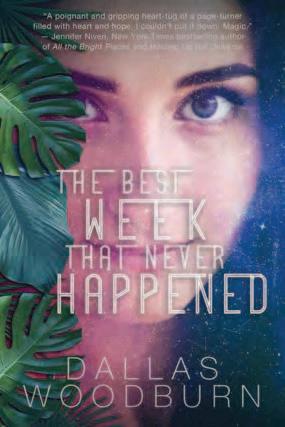
AI started writing it after one of my best friends was killed in a car accident. There was a line in my head — what would happen if we died and got to live the best
AAnother young adult novel — very slowly. It has a love story element and plays with the idea of alternate realities. The main characters are in a wrong reality, trying to get to a better one.
QDo you have a favorite indie bookstore here in the Bay Area?
AThere are so many good ones! I love Rakestraw in Danville — I lived (in that town) with my grandparents when I had the John Steinbeck Fellowship at San Jose State. I love Mrs. Dalloway’s in Berkeley. Also, Kepler’s in Menlo Park and Hicklebee’s in San Jose. Bookstores are my happy place. I can never leave without buying one or two books.
“Brown Girl Dreaming” by Jacqueline Woodson: This memoir-in-verse is categorized as “middle grade,” but I think it is a profound read for all ages. The language is so beautiful – it takes my breath away.

“A Heart in a Body in the World” by Deb Caletti: This novel will utterly break your heart and then fill it up again. A timely and timeless story of grief, healing, redemption and empowerment.

“Wooden and Me” by Woody Woodburn: My dad is my favorite writer. This is his memoir about his two-decade friendship with legendary UCLA basketball coach John Wooden. My dad’s warmth and wisdom are felt on every page.

 LESLIE KARST
LESLIE KARST
Leslie Karst has blended her law, literature and culinary arts degrees into a new career as a mystery writer. She’s now four books into a series of foodie whodunits set in Santa Cruz, with protagonist Sally Solari, a chef and restaurateur, solving crimes when she’s not sauteeing Spot Prawns with Citrus and Harissa. Of course you’ll get hungry! But the recipes are in the back of the book.
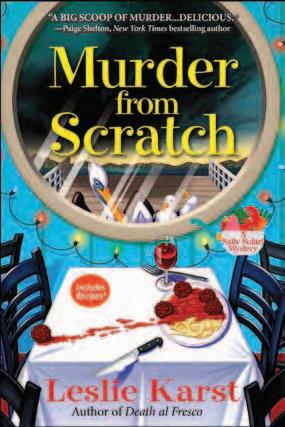
QHow does a lawyer pivot into a second career as a writer of culinary mysteries?
ADry, tedious contract interpretation versus murder with Linguine and Clam Sauce — which would anyone prefer? But truly, the switch wasn’t that far of a stretch for this ex-research and appellate attorney, as both types of writing require organization, attention to detail and — most important — the telling of a good story.
QSally Solari is also a former lawyer. Do the similarities end there?
ANot at all: Like Sally, I’m rather obsessed with food. We’re also both recreational cyclists and share the love of
“A is for Alibi” by Sue Grafton: The book that taught me that the line between “soft” and “hard” crime fiction was fuzzy.

of my series. I’ve lived in Santa Cruz since 1974, and I think folks appreciate how I weave into my stories its transformation from a sleepy beach town — once home to Italian fishermen, farmers, retirees and vacationers — to a modern city teeming with hippies, hipsters and techies.
QHow do you decide which recipes to develop and weave into your mysteries?
“The Alexandria Quartet” by Lawrence Durrell: A murder mystery in disguise, this love letter (four, really) to Alexandria deliciously transports the reader to 1930s Egypt.
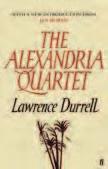
“Go, Dog. Go!” by P.D. Easton: Who couldn’t adore a children’s picture book about multi-colored dogs whizzing about in tiny cars?

dogs, opera and Elvis Costello, the Giants baseball team, as well as single-barrel bourbons. Sally, however, is far braver than I. If faced with a dead body, I would run as far away as possible.
QYou capture the essence of both old and new Santa Cruz. How do locals respond?
AI’m happy to say the local response has been uniformly warm and positive — shout-out to Bookshop Santa Cruz, which has been a terrific supporter
AAh ... my favorite part of writing. When I arrive at a scene that entails food or cooking, I’ll consult lists of seasonal fruits, vegetables and fish, then brainstorm ideas and concoct the dishes in my head. Some are based on things I’ve eaten at restaurants or made myself, but others are pure fancy — meals I’d simply love to eat if I could.
QWhat’s next for Sally Solari? Which of the five senses haven’t you focused on yet?
AThe fifth book concerns the sense of smell — or rather the lack thereof, since on page one, Sally wakes up having lost her ability to smell due to a nasty sinus infection. Much of the mystery focuses on an artichoke farm up the coast whose tagline is “Thistle make you hungry!”
“Mastering the Art of French Cooking” by Julia Child, Louisette Bertholle, Simone Beck: I hear Julia’s booming voice in each detailed explanation of technique in this culinary masterpiece.

“Ulysses” by James Joyce: Leopold Bloom is perhaps the most truly human character ever created in the world of fiction.

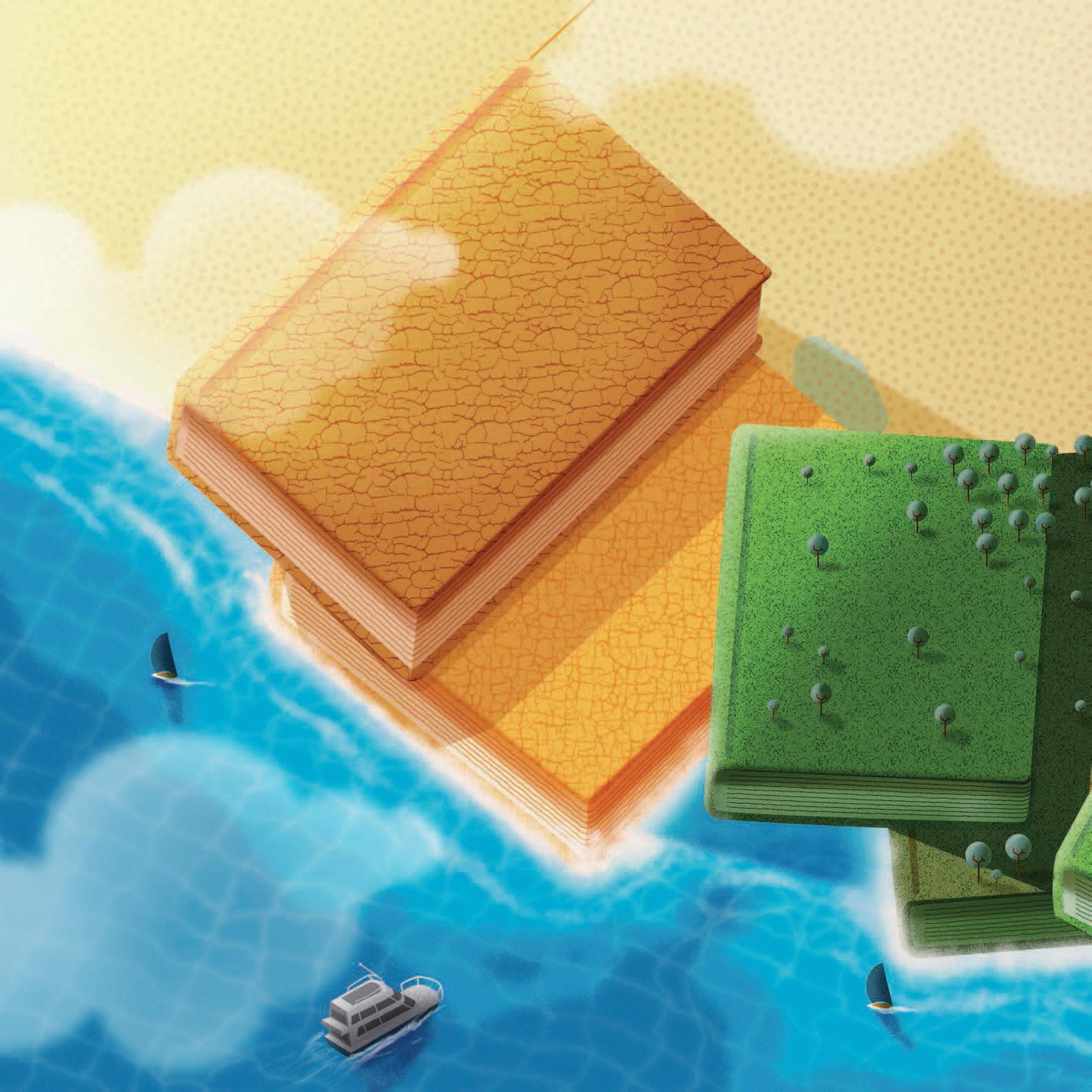
 STORY BY TOM BENTLEY
ILLUSTRATION BY DAVIDE BARCO
STORY BY TOM BENTLEY
ILLUSTRATION BY DAVIDE BARCO
California has been a stage for celebrated works of fiction, its lyrical landscapes the proscenium and often the star. And the state’s urban rivals, Los Angeles and San Francisco, elbow each other for attention, whether you take your words hard-boiled or gussied up with some literary lather.

As I page through books where California was the context, writ large or small, nine truly great volumes grab my attention — beginning with a wrenching drama. (Note: no definitive spoilers here, just a dipperful of flavor.)
Andre Dubus III’s “House of Sand and Fog” is a book to make you scream aloud, “No! Wait! Don’t do that!” The story is set in fictitious Corona, California — a stand-in for the actual sandy and foggy Pacifica, the real model for the town. It opens with a real-estate mistake between a recovering drug addict and an Iranian immigrant that spirals into a snake pit of misunderstanding, undue pride, misplaced bravado and emotional error. As tensions breathtakingly escalate, Dubus gives you reasons to care for all the characters. Be forewarned: Their grievous mistakes will gut you.
San Francisco’s dense, entangled Chinatown is the setting for Amy Tan’s classic “The Joy Luck Club.” Through its intricate, well-integrated structure, the book works eight perspectives: four mothers, four daughters telling their stories, which mingle and distinguish the daughters’ American perspectives and traditions with those of their native Chinese mothers. There’s humor, sorrow and surprise in discovering how well — or not — we know our parents and how well they know us.
Despite the promise of palms and endless summer, my L.A. collection shows a world gone south. Raymond Chandler’s “The Big Sleep,” set in 1930s L.A. and Hollywood, offers many bouquets — all of them dirty and corrupt. People are bought and discarded, trust is
KARL MONDON/STAFFscarce, meanness abounds. Except you also get the crusty detective Marlowe — played in the 1946 movie by the crusty, though captivating Humphrey Bogart — who, despite his rough edges, has a code of honor. Crazy and perhaps inexplicable twists abound.
“Ask the Dust,” by John Fante, is set a few years later than “The Big Sleep” but has some parallels in depicting people of busted dreams. The lead character, Arturo, has come to L.A. from
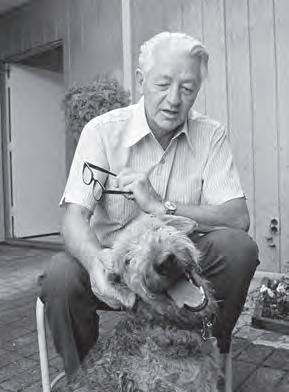
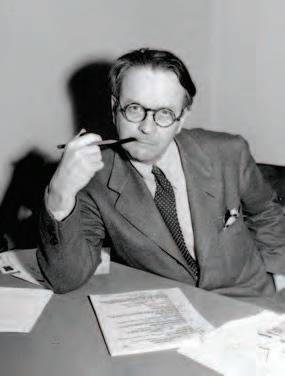

Colorado to become a writer. His girlfriend is Camilla, a Mexican waitress, and let’s say their relationship isn’t ideal. There’s Depression-era grime and exhaustion, and — how Californian — an earthquake disaster. And in the end, the dreamers in the book are left with only their dreams.

Hollywood is the setting, too, for “The Day of the Locust” by Nathanael West. The lead character is another transplant looking to make his way in the film industry. There, he falls in with a motley crew of people from elsewhere (among them an ungainly fellow named Homer Simpson). Expect furtive attempts at relationships, thwarted lust, mangled dreams and a crazed mob scene at story’s end. And lots of vivid language that limns the contradictions of California’s promise — with deeper attention on film industry toxicity — and SoCal’s darker realities.
Up in the Bay Area, everything isn’t all avocado toast, either. Dave Eggers’ “The Circle” is a winsome slice of dystopia, a bit like the frog in the pot brought to a slow boil: The idealism and camaraderie in tech innovation out to change the world turns into a chilling revocation of personal rights and responsibilities. The reader’s thoughts of “Ugh, that couldn’t happen, could it?” are followed by some “Wait, it’s already happening!” creeping in. Eggers has done a fine job of showing the lead character descending from bright optimism to — you’ll have to read it.
Sail across the San Francisco Bay to Oakland for Tommy Orange’s complex “There There,” which presents an intricate, woven fabric of urban Native Americans, some with startling and at-first unknown relationships that converge at story’s end in a heavy, somber finale at the Big Oakland Pow Wow. Orange does nice work separating and distinguishing the individual perspectives and thoughts of a varied cast and bringing in the power, pain and interdependence of memory, history and generational burden.
Nevada City, the New Almaden mining camp and a dash of Santa Cruz provide settings for Wallace Stegner’s story-within-a-story. “Angle of Repose” opens with its lead character, Lyman Ward, writing a history of his grandparents, who came out West chasing that ever-elusive California dream.
Lyman’s own marriage has fallen apart, as did that of his grandparents, and Lyman’s explorations of both falls direct the tale. Maybe you just can’t go far enough west to actually get away.
But who wants to leave on a sour note? Celebrate, instead, the humor and humanity of John Steinbeck’s “Cannery Row,” set when Monterey was a sleepier place. The goofy and sometimes bumbling camaraderie of Mack and the other characters setting up a giant party to celebrate Doc — modeled on Doc Ricketts, the real-life marine biologist pal of


Steinbeck — and his goodness comes to a mad, sad end. But the second party — it’s a humdinger.
That’s nine. But we can’t leave without mentioning Joan Didion, especially her essays about L.A. and California in general. The collections “Slouching Towards Bethlehem” and “Where I Was From” have sterling examples of her unusual, crisp prose. And Susan Orlean’s “The Library Book,” about the checkered history of the Los Angeles main library, a great conflagration and library history in general, is excellent. That’s 12. Read on.

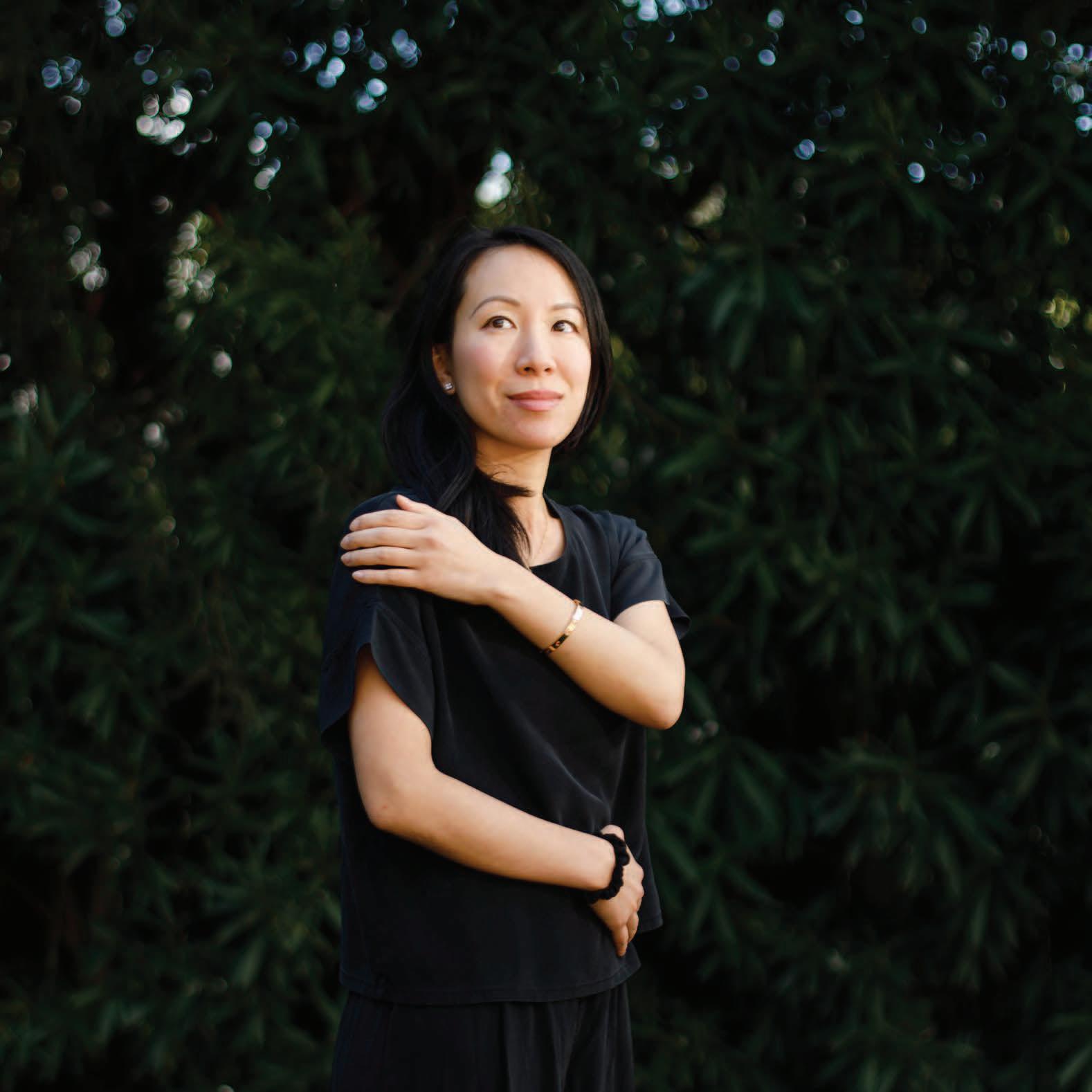 KATHY WANG
KATHY WANG
Write what you know, they say. For Los Altos author Kathy Wang, that’s Silicon Valley and the Chinese-American experience. The former served as the backdrop for the latter in her 2018 debut work, “Family Trust,” a novel that had readers flipping pages madly to see how this drama would unfold — all while chortling over Wang’s wry takedowns of our tech culture.

QYou went from Silicon Valley product manager to author with a HarperCollins book deal. Wow. What’s your writing background?
AI don’t have one! Or at least not in the traditional sense –MFA, etc. I’d always loved reading though, like all authors.
Q“Family Trust” got ink in publications as varied as The Sunday Times of Britain, PopSugar, AARP and Southern Living. Why is the appeal so broad?
AI don’t know, honestly — and in publishing, sometimes you just get lucky. The novel does span generations, and it’s multi-POV, so there’s a variety of ages in there.
“This Is How We Do It” by Matt LaMothe: My favorite children’s book to give as a gift. It follows the lives of seven real children around the world, showing you how they eat, learn, play and sleep. My kids love it, too. It’s gorgeous.

to endure an overly long school recital. As for Fred, he is my personal favorite. I crafted him with a lot of love. I did attend Harvard Business School and live on the Peninsula, and those two alone should qualify me as an expert on this character trope.
QThinly disguised descriptions of Bay Area locales — a Michelin-starred restaurant, a not-so-tony town — pop up on virtually every page. How do people respond to those?
“The Bitch in the House” by Cathi Hanauer: A series of essays about women coming upon that phase of their lives when they’re balancing careers and hobbies and partners and motherhood.

QYou inhabit such disparate, deeply layered personalities in the book. Fred is a desperate climber in the VC world. Linda is an insightful, deliciously catty woman in her 70s ...
ALinda is like countless Chinese grandmas/mothers I’ve met over my lifetime, and I feel I know this character so well that I could write them in any sort of scenarios — shopping at Ranch 99, going on a cruise, being forced
AGenerally, they like them! The locals, at least. They always tell me they get a kick out of recognizing the places. I did receive a message from a reader in the Midwest who read it and said, ‘Is the Bay Area really like this? Because if so, it’s WEIRD.’
QDo you have a second novel in the works?
AI do! You should expect to see it in late 2021. Again, Silicon Valley will be the setting. I keep saying I’m going to do someplace different, but there’s so much more to cover.
“Listen to the Marriage” by John Osborne: One of the best portrayals of marriage I’ve ever read. It’s the sort of book that multiple generations would likely enjoy. Osborne lives in San Francisco.

“If You Leave Me” by Crystal Hana Kim: A gorgeous multi-generational family saga — my favorite kind — set in Korea. Kim is a beautiful, but never overly flowery, writer.

“Children of Time” by Adrian Tchaikovsky: I’m not a sci-fi devotee, but this was one of my best reads this year so far. The story is incredible.



henaman’s trenchcoat wearsasthin asaspecious simile,he’s supposedtodo somethingaboutit. Basically,getanew trenchcoat.Fedoras, too.Andshoes.Lotsof’em— snazzy,sturdy,maybegummed solesforstealth.

DonHerron’samanwho’sseen manyatrenchcoat.
“Howmany?Ican’tanswer,”he says,spittingoutsnappypatter onthetelephoneline.“Probably around10atleast.”
Aheavytollindeed,taken whenyou’vespentfourdecades leadingsuspectingcustomerson DashiellHammettwalkingtours throughthecoldcomfortofSan Francisco,andyouneedtolook thepart.
Withoutthegladrags,though, Herronmightnotfitthemold.It’s hardtotellifhisjawislongand bonyorshortandstubby,since helooks,ratherpleasantly,likea beardedSanta.Buthisgiftsare gabandguidance,andhe’sgot thelowdownonHammett’shardboileddetectivenovels,especially “TheMalteseFalcon,”enoughto fleshouthisfour-hour,$20by-appointmenttours.
Thesejauntstakethelidoffthe city—thesettingformostofHammett’stales—andletpeoplesee theworks,thereal-lifebarsand foodjointsfrequentedbyHammetthimselfandbyhisfictional anti-hero,SamSpade,allsetback inthe’20s—the1900kind.
Fornighon43years—with abriefpauseforatriplebypass afewyearsback—Herronhas followedthetrailofHammett’s privateeyes,grafters,killersand broadsthroughspeakeasiesand shadowyalleys.It’sthelongest-livedliterarywalkingtour
ActorHumphreyBogartplayediconic privateeyeSamSpadeinthe1941noir film,“TheMalteseFalcon.”
in the country, he says, and most certainly, the longest done by the same guy. The mystery is: Why?
“Basically, I like the stories,” he says.
At the time of this writing, his in-person tours are dead in the water, shot in the back during the COVID-19 stay-home orders. But they’ll revive as soon as the world does. And in the meantime, interested parties can DIY the tour — or just vicariously enjoy it — with his guidebook, aptly named, “The Dashiell Hammett Tour,” first published in 1991 but expanded and republished in 2010 and still available. And his blog at www.donherron.com is full of tips on books, films and all things dark and moody and noir.
“You want it all, this is as close as you can get,” reads his guidebook chatter, “whether you gumshoe the actual Frisco streets or play armchair detective in the comfort of your own home.”
On the physical tour, Herron often starts at the Flood Building, on Market at the foot of Powell by the cable-car turnaround. Makes for a good meeting spot. Don’t come alone. Or do. He doesn’t care.

The spot’s spot-on, since Hammett, who spent about a decade in San Francisco in the 1920s, had signed on at the Pinkerton National Detective Agency, which was based in the Flood. It’s a glam dame of a building, all Beaux-Arts columns and balustrades. Not a lot to see Hammett-wise (The Gap is now the main tenant), just a feel to the place. There is, however, a mock-up Maltese Falcon in a glass case in the lobby.
From there the route varies, but usually includes the Geary Theater at Mason and Geary, the Palace Hotel on Montgomery where Spade “ate luncheon” like a gentleman, and the building at 891 Post St., where Hammett lived when he wrote “Maltese.”
Herron did tip us off to some must-sees. Burritt Alley, for one. It’s next to the Tunnel Top bar, near where Bush and Stockton streets meet. “It’s kind of the highlight of the tour,” Herron says. “That’s where Brigid O’Shaughnessy shoots Sam Spade’s partner, Miles Archer, in ‘Maltese Falcon,’ the first murder in the book. There’s even a plaque on the wall about it.

“It’s a pretty narrow, kinda dark alley, so it has that noir feel. But



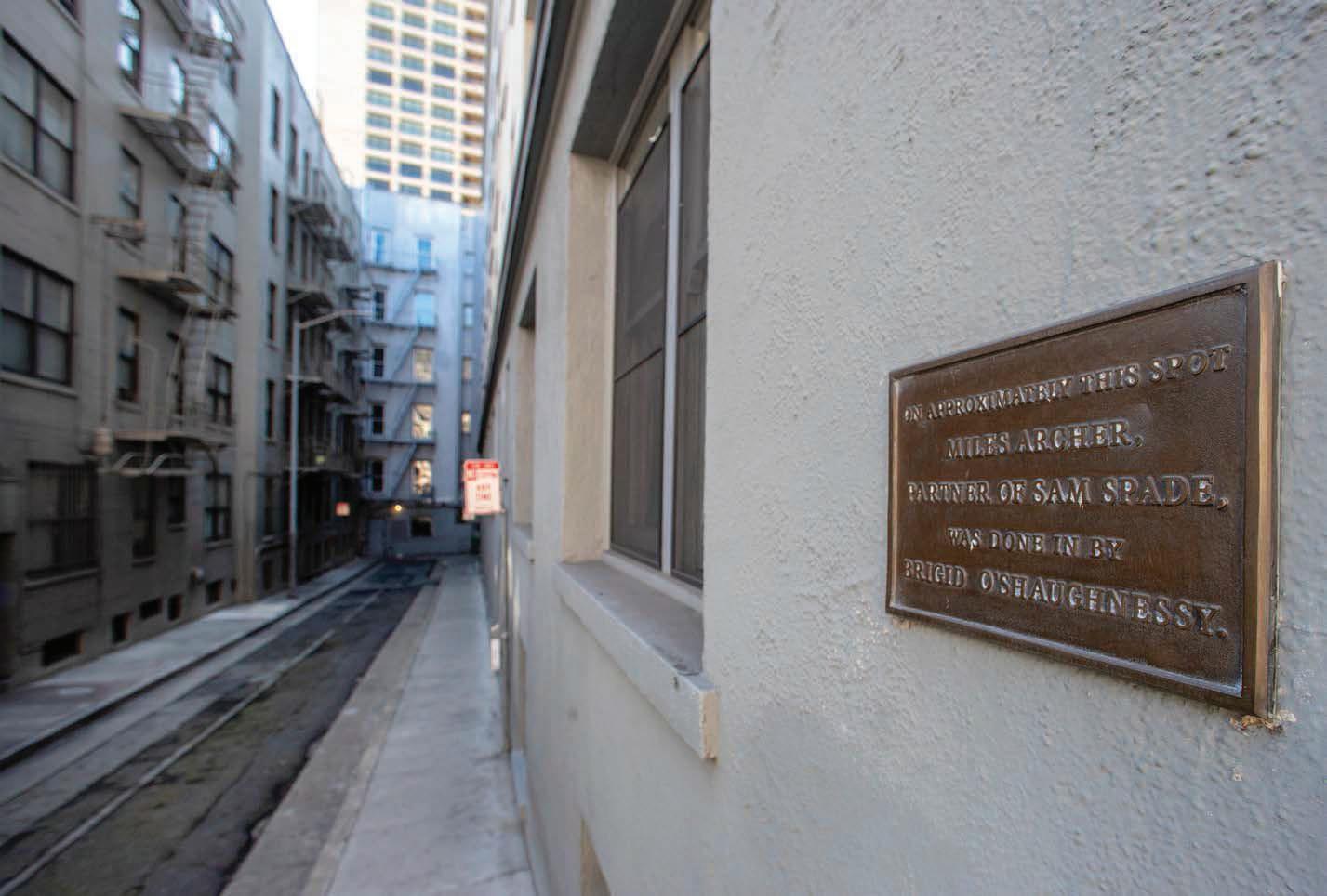

it’s basically just an alley. I’m not saying no one has ever actually been killed in there in real life. But it looks pretty much what you might expect. Your expectations will not be dashed.”
Another major location is John’s Grill at 63 Ellis St. “It’s essentially the only restaurant mentioned by name in ‘The Maltese Falcon,’” Herron explains. “Spade stops there for a quick meal before he goes on this wild chase down to Burlingame. It’s fairly antique looking — been there over 100 years. You can go in and have a drink and imagine you’re Sam Spade for a few minutes.”
Be sure to order Sam Spade’s Lamb Chops off the regular menu, at $39.95 a pop.
Herron’s own tale began in Tennessee. He grew up there, but grew out of it. “I didn’t like Tennessee, as it turned out,” he says.
“I wanted to move to a cosmopolitan city. Went to New York once, but it’s too big. San Francisco in the early ’70s, when I first came out here it was just right.”
He would eventually get a job as a night cabbie. “One of the great things being in a city then was you could wave your arm and a, cab would come. I was a cabbie for 30 years. Not any more, though. Can’t say I retired. I quit. Uber kinda killed it off for any kind of viable income.”
A book lover in general, he’s read “Maltese” a dozen-odd times. But it’s not even his favorite Hammett work. He’s a huge fan of the “Continental Op” tales, which predated “Maltese” and were also set in SF.
“Those stories are more fun,” he says. “It’s a first-person narrator who never tells his name, an operative for the Continental Detective Agency. He’s short and fat and not what you expect as a hero.”
Once settled in San Francisco, Herron was given an article called “Stalking Sam Spade” that had recently run in the Sunday paper, tracking Hammett locales through clues in the book. That piece was followed by some additional magazine articles.


“So I didn’t uncover the sites myself,” Herron admits. “Other people before me had found most of them. But I developed the tour,” he says. “Some people would say, ‘Oh, anybody coulda done that.’ I’d say, Yeah, but here’s a key distinction — I did it.”
He started holding the tours in 1977, at first every Sunday afternoon, year-round, charging only $1 a person. The largest group was 78 people. He gradually dropped it to summertime only and now just appointments. Not because of lack of interest in Hammett — it’s just the way Herron wants to do it.
The city has changed a bit too, with tech giants looming over much of downtown. “Yeah, part of the tour is, ‘This building is new, that wasn’t there, this wasn’t here.’ Definitely, you can’t find much down by Salesforce Tower area,” he says. “But if you know what you’re doing, you can still find parts of town where every corner has buildings that were up in the ’20s.
“Everything changes, but Hammett’s pretty durable.”
Trench coats? Not so much.
 LISA BROWN
LISA BROWN

Into instant gratification? Like fast food? No time to read a 400-page tome? Well, you’re in luck. Best-selling illustrator, author and cartoonist Lisa Brown’s new book is the easily digested and utterly hilarious “Long Story Short: 100 Classic Books in 3 Panels.” It basically summarizes — in comic-strip form — everything from “Don Quixote” and “Jane Eyre” to “Beloved” and even “Twilight.” You may know the San Francisco artist from her “Three-Panel Book Reviews” for the San Francisco Chronicle and her award-winning picture books like “The Airport Book.” And she has also collaborated on three books with author Lemony Snicket, aka Daniel Handler, who happens to be her spouse.

QThis visual CliffsNotes of the classics seems perfectly suited for today’s short-attention-span world. How did the awesome Three-Panel Book Reviews start?
ABack in the dark ages of 2008, Oscar Villalon, who had been the intrepid editor of the Chronicle’s Book Review section, asked if I wanted to do something visual for the paper. And yes, I did. I had done a regular comic strip in my college paper years and years before, and thought that I’d like to reacquaint
“You & a Bike & a Road” by Eleanor Davis: The illustrated travel journal of the author as she attempts to bike from Arizona to Georgia is funny, poignant and gorgeously drawn.
QWhich novels were the hardest to distill?
AIt’s a toss-up between insanely complicated epics (“The Bhagavad Gita”) and books that were deep and meaningful to me but not at all funny (“Beloved.”) The ones that absolutely work best are antiquated classics that are both amazing and ridiculous at the same time, like “Madame Bovary.”
“Beautiful Darkness” by Fabien Vehlmann and Kerascoët (Marie Pommepuy and Sébastien Cosset): It’s weird and dark and French and exquisitely, sweetly drawn and also a little gross — a tale of a society in chaos. And it takes place inside the corpse of a little girl. See? A little gross.

myself with the form.
Little known fact: The comics were briefly syndicated. I was strangely euphoric when they sent me a sample “Broom-Hilda” to show me the size specifications. However, I don’t think any newspaper ever picked them up. Regardless, I am a former syndicated cartoonist. No one can take that from me.
QWhy three panels? Why not four? Twelve? One?
AWell, I often cheat. Some of the strips are one panel, or two, or even four. But most of them fit into the three-panel format, an homage to the funny pages. If it was good enough for Charles Schulz, it’s good enough for me.
QWill these tidbits of tomes help me sound smart at parties? AYes.
QYour first graphic novel, “The Phantom Twin,” must have been a completely different process ...
ACompletely different. My process for my comic strips is 1) Read or reread a book (or, let’s be honest, watch a BBC production). 2) Think of something (hopefully) funny. 3) Draw. The drawing start-to-finish takes an afternoon, usually. The graphic novel was years of writing, rewriting, sketching, outlining, drawing, etc., etc.
“Love and Rockets” comics series by Jaime, Gilbert and Mario Hernandez: Fabulous character-driven storytelling by masters of the form.

Anything by Kate Beaton: If you like “Long Story Short,” you’ll love her work. It’s tons of hilarious riffs on history, culture and literature. Start with “Hark! A Vagrant!”

“Laura Dean Keeps Breaking Up With Me” by Mariko Tamaki and Rosemary ValeroO’Connell: A beautifully written and illustrated YA graphic novel about a high school love affair.



The virus had shooed away most interlopers, leaving blessed Big Sur to perform the annual spring blooming in peace.
All for the best, I supposed. For once, I could take the bending curves at the leisurely pace this stretch of Highway 1 heaven demands but seldom affords. Why not enjoy the absence of harried sightseers scurrying along California’s most sacred and cherished ribbon of asphalt that separates Monterey from Morro Bay.
This meandering voyage into Big Sur needed a downshift, because it had no relation to the selfie-seeking strangers snapping photos of curvy Bixby Creek Bridge.
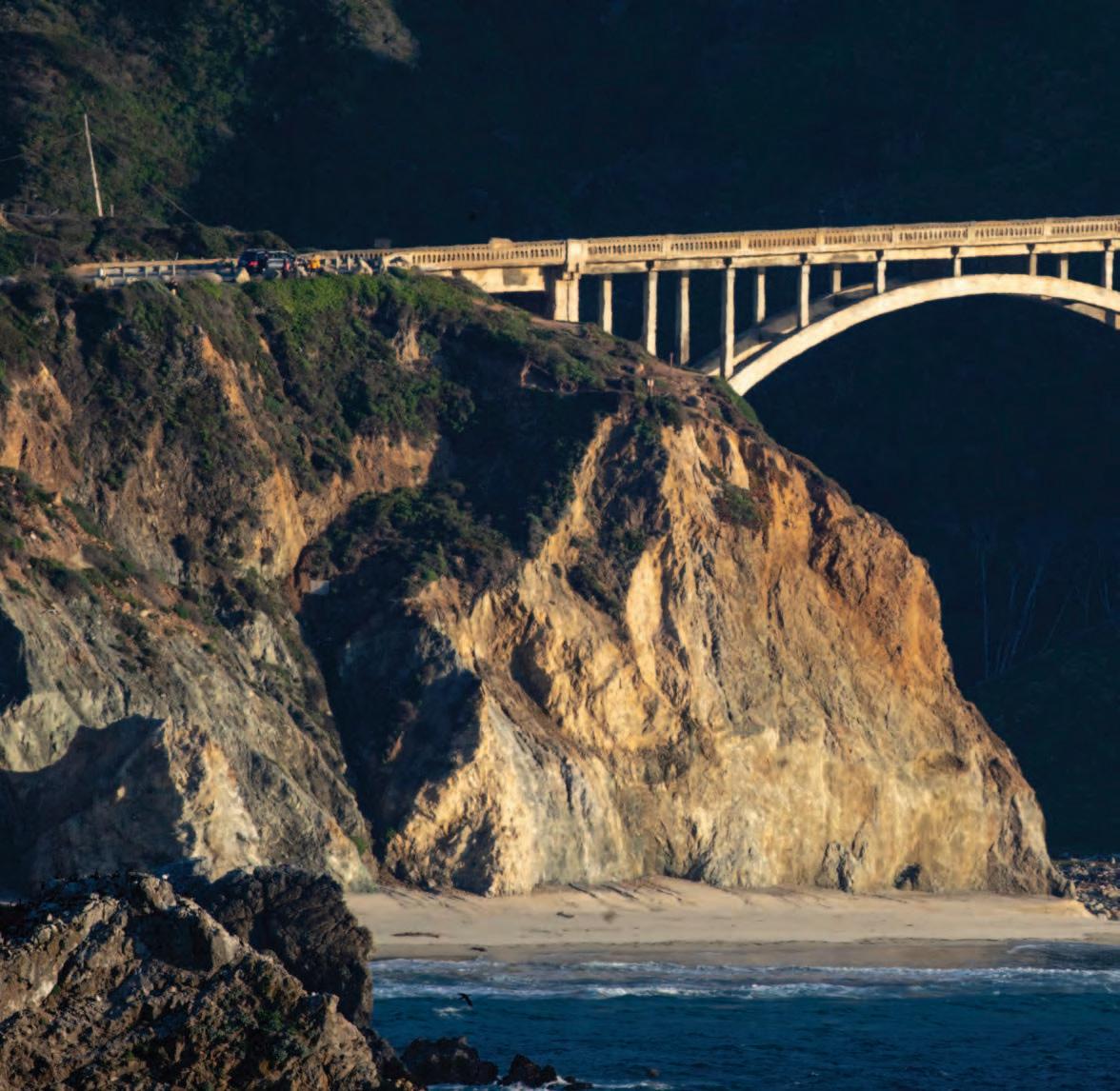
I was on a literary scavenger hunt.
Robinson Jeffers sat shotgun with his lyrical descriptions of the topography scattered across the dashboard like a mosaic of sheet music. Henry Miller’s ghost crammed into the backseat with Jack Kerouac, Jack London and Lilian Bos Ross (“The Big Sur Trilogy”).

We needed a soundtrack, so I picked Joni Mitchell’s “Blue” and Red Molly’s “James” albums to escort us.
Since the early 1900s, a cadre of writers has ambled through the panoramic coastline to paint episodic scenes of a hallowed ground some two hours south of the Bay Area. Paired with the velvety images of Carmel Highlands landscape photographers Ansel Adams
Big Sur’s iconic Bixby Creek Bridge catches the late afternoon sunlight along the dramatic California coast.
and Edward Weston, a picture has emerged of the temporal intersecting with the consecrated.
Their prose seared Big Sur into our consciousness like an Old Testament story. The tales came in all sizes and shapes, with words grasping for descriptions of something too ephemeral to define.
“The place itself is so overwhelmingly bigger, greater than anyone could hope to make it that it engenders a humility and reverence not frequently met with in Americans,” Miller wrote exulting-
ly in “Big Sur and the Oranges of Hieronymus Bosch.”
Crossing Big Sur’s borders shocks the system like a dip into the ocean on a gray-coated New Year’s Day. Like the first kiss of spring rain.
This bloodthirsty land of chamise and chaparral once populated by the Esselen people is a paradox that Jeffers in particular kept etching. Those OMG vistas of a roiling sea battering the rugged shoreline are juxtaposed with redwood-lined creeks, whose

headwaters are way up the gullies in the Santa Lucia Mountains.
Jeffers considered “Big Sur country so powerful that a human action would not be noticed in it unless that human action was of operatic dimensions,” said Taelen Thomas, a Carmel performance artist.

Jeffers had studied literature, medicine and forestry at the universities of Southern California and Washington before settling in Carmel in 1914 with wife Una Call Kuster.
They built the Tor House at then-isolated Carmel Point, a few miles from the famous mission that was once the headquarters for Father Junipero Serra. Jeffers surrounded himself with nature’s bounty, then engaged in a pitched battle to portray it.

Jeffers opens “Love the Wild Swan” with a telling lament: “I hate my verses, every line, every word.”
“The reason is, he can’t find the words to describe how beautiful it is,” said Elliot Ruchowitz-Roberts,
president of the Tor House Foundation and professor emeritus of literature at Monterey Peninsula College.
Ruchowitz-Roberts said British poet Eric Barker, wryly remembered for standing on the bar at the bohemian cafe Nepenthe to recite limericks, also agonized over the futile pursuit.

“They are so overwhelmed by the beauty and realize how insufficient language is to describe it,” Ruchowitz-Roberts said.
I commiserated with them as
welcome rays reddened our sunstarved faces next to the Big Sur River. Puffs of milkweed danced in the breeze like soft snow. It felt as if a supernatural power had taken hold.
John Steinbeck mostly left the place for others to mine, except perhaps in the short story “Flight” that burrows into Big Sur’s rough-hewn backcountry: “Soon the canyon sides became steep and the first giant sentinel redwoods guarded the trail, great round red trunks bearing foliage as green and lacy as ferns. Once Pep was among the trees, the sun was lost. A perfumed and purple light lay in the pale green of the underbrush. Gooseberry bushes and blackberries and tall ferns lined the stream, and overhead the branches of the redwoods met and cut off the sky.”
Steinbeck’s words followed me along an Andrew Molera State Park trail one day, as the tiramisu layers of landscape shifted with each rising step. The hard-dirt path led to spectacular sights of 3,709-foot Pico Blanco — a “steep sea-wave of marble” in Jeffers’ poem “Return.”
The main arteries of Big Sur’s literary pulse are found at Deetjen’s Inn, the Henry Miller Memorial Library and the Tor House, with the downing of a few cocktails at Nepenthe’s in honor of Miller and gang.

But it takes more time — and voracious reading — to retrace all of the writers’ footprints.
“Everyone talks about Big Sur as traveling through, but that’s not what it’s about,” said Matt Glazer, Deetjen’s general manager. “It’s about stopping here and sinking in and getting creative.”
German-Norwegian immigrants Helmuth and Helen Deetjen built the inn in the 1930s before the completion of Highway 1 in 1937. Jeffers was a frequent visitor, and later came Miller and other writers.
But the unforgiving terrain kept Big Sur from becoming a writer’s colony the way Carmel

did for bohemian refugees of San Francisco. The famous writers, like Jack London, made cameos before moving along to more stable ground.
No doubt the telluric aura here moved these temporary sojourners. Jack Kerouac’s autobiographical novel “The Big Sur” recounts the time he lived in a Bixby Canyon cabin owned by poet Lawrence Ferlinghetti of City Lights Books fame.
Hunter S. Thompson briefly worked as a caretaker at Esalen, a center of counterculture exploration, while writing his first novel, “The Rum Diary.” Many others, including Richard Brautigan, who
wrote “A Confederate General from Big Sur” but is best known for “Trout Fishing in America,” passed through long enough to sprinkle their work with regional influences.
The coast provided the inspiration for stories, but not the fertile soil to grow deep roots.

“Anywhere you are, you are living on the edge of disaster,” said Thomas, the Carmel storyteller.
A brass bust of Jeffers tucked into a corner of Deetjen’s dark dining room underlines the poet’s enduring connection to the naked pastures and deep limestone gorges that disappear into the expanse of the white-capped Pacific.

“If you are a writer who embodies the spirit of the coast, it has to be Jeffers,” Ruchowitz-Roberts said. “He says the landscape is the main character, and the landscape speaks through the people that he writes about.”
Unsurprisingly, the embers of Jeffers’ creativity still burn. We found it after peering over a wooden fence of the closed Miller Library, a rustic redwood and pine house that sits underneath a canopy of towering coast redwood trees along Highway 1.
Library executive director Magnus Toren pushed a hand mower across a tangled lawn that had grown thick from spring rains. Toren, who has lived in the area for decades, invited us into the compound. He recalled how Miller’s home above nearby Partington Cove had drop-dead views of the Pacific. But, Toren said, Miller would work in a small, wooden shed facing a wall to not let the imposing beauty distract him.
It soon became apparent our trip was not simply a journey through the past. The Miller Library is the conduit that connects the region’s literary legacy to the present day. While the library is stuffed with books, posters and paintings of the Big Sur writing corps, Toren also has turned it into the cultural heart of the area with lectures, concerts and book readings.
Art was being created even amid the coronavirus lockdown. Edwin Huizinga played a movement from a Bach cello suite on his violin, while Erin Carey, a professional circus artist, spun around on a Cyr wheel in a feat of derring-do. Caretaker John Carlin was at a table molding brick-colored pottery.

“It’s always been a refuge for artists,” Carey said of Big Sur. “Even now.”


Especially now, as the scribbles of humanity record the untold tales.
Big Sur’s latest chapter is waiting to be written.
 ADAM HOCHSCHILD
ADAM HOCHSCHILD
It was a fairy-tale wedding that super-charged the gossip circuits of 1905 America. And Berkeley journalist and historian Adam Hochschild, author of the best-selling “King Leopold’s Ghost,” spins the true tale again in “Rebel Cinderella: From Rags to Riches, the Epic Journey of Rose Pastor Stokes.” His heroine is the long-forgotten Russian Jewish immigrant sweatshop worker who snagged the heart of Graham Stokes, scion of one of New York’s richest Protestant families. Though largely uneducated, she gradually emerged from his shadow to become a gifted orator, labor organizer and fearless champion of social justice causes.
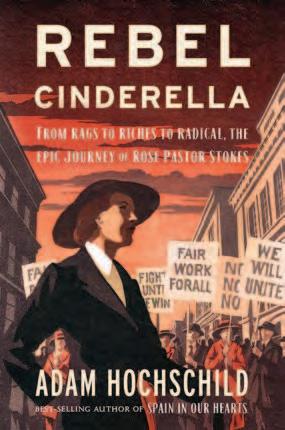
QWhat do you think motivated Rose?
AI think she had a very strong sense of justice, which came out of her own life experience of a childhood and young womanhood of extreme poverty. By the end of her dozen years as a cigar factory worker, which started when she was 11, she was the sole support of her widowed mother and six younger siblings — the ne’er-dowell stepfather had abandoned the family, and a couple of them were in foster care. She knew what poverty was like and she wanted a country where that kind
of dire poverty didn’t exist.
QWhat do you think were her greatest successes?
AShe, in association with a number of people of that era, helped publicize various ideas that we take for granted today. Access to birth control, for example ... Social Security, the idea that you have a right to medical care. These were things that the early 20th-century American socialists put on the table. Even talking about birth control in public was against the law. Her friend Emma
Goldman, her friend Margaret Sanger went to jail for this. They didn’t quite dare put her in jail, much to her frustration.
QWhat do you imagine Rose would be doing if she’d been born here 25 years ago?
AShe would be doing everything possible to get Donald Trump out of office and to address some of the same inequalities that motivated people to get involved in radical movements 100 to 125 years ago. You know the spread in the United States today between the share of wealth and income held by the top one percent and the remaining 99 percent is greater than it was when Rose and Graham got married in 1905.

QThere was a huge storm of publicity when Rose and Graham got engaged. We are much too sophisticated to be as electrified by such a mismatched marriage as theirs, right?
AWell, what about Harry and Meghan? That’s the example that comes to mind, but there certainly have been plenty of others. Anytime a commoner marries into the British royal family, the papers go wild. And I think that the Cinderella dream is an ancient one.
3 picks from Hochschild

 BY ANGELA HILL
BY ANGELA HILL
began serving time as a federal prison in the 1930s, its inmates lived in complete isolation from the free world, tamed under a “rule of silence,” not even allowed to listen to the radio until about the 1950s and forever taunted by the glittering lights of San Francisco just beyond reach.
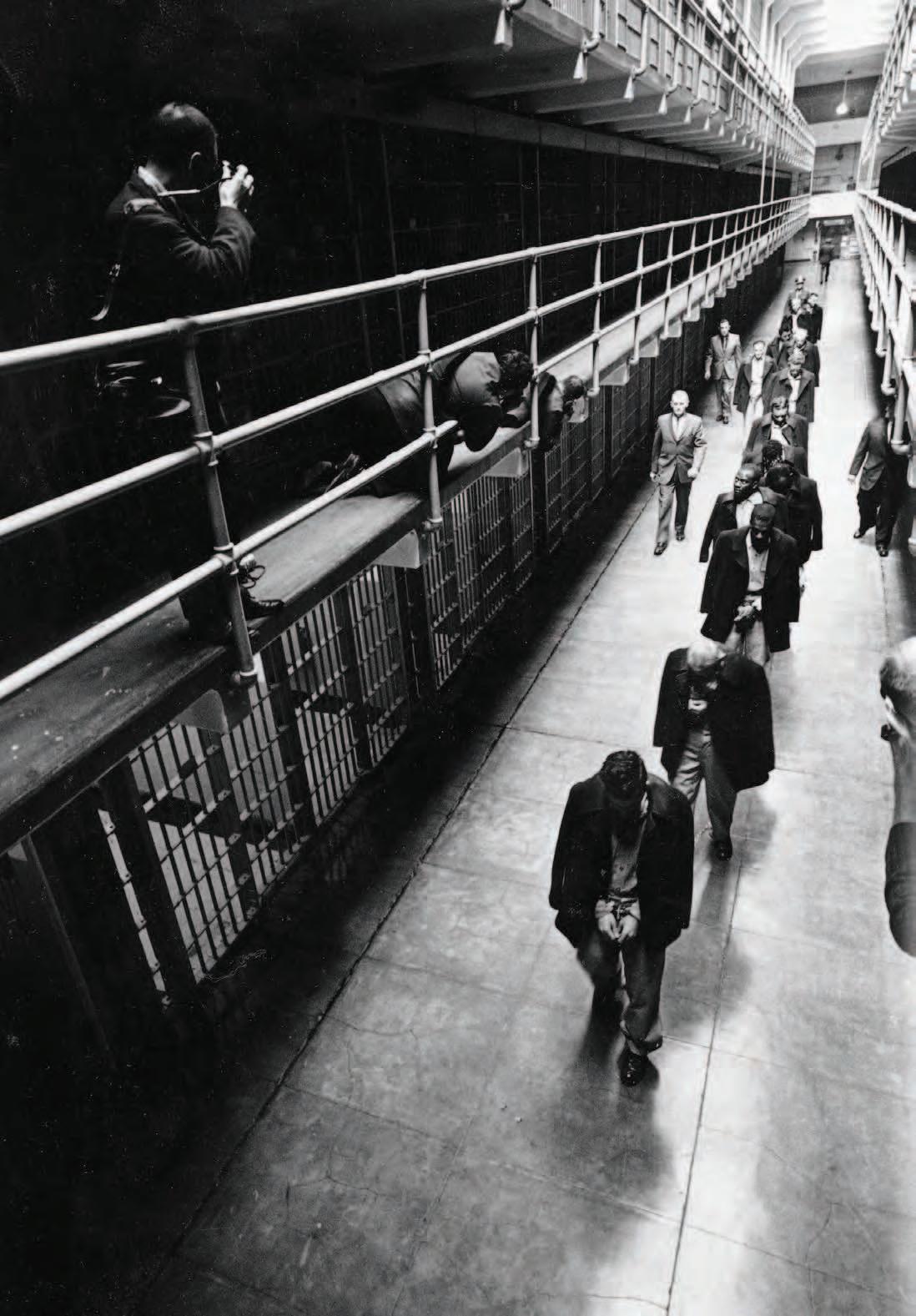
“They had to rely on new guys coming in to hear anything about outside life,” says Michael Esslinger, author of several books on the prison, including “Alcatraz: A Definitive History of the Penitentiary Years.”
“It was pure isolation,” he says. “It was like time stood still for them.”
Hmm, sound familiar?
For sure, during the COVID-19 crisis, the outside world has been isolated from Alcatraz and every
other major tourist attraction. That’ll change, of course, so while you’re planning for a future visit, you might read up on it for a fuller picture of The Rock. This activity will keep you busy, since there are volumes of literature — nonfiction and fiction and everything in between — written by historians, novelists, former guards and their families and even former inmates. Not to mention the countless documentaries, motion pictures and great-escape conspiracy theories galore.
Since the one-time home of “Machine Gun” Kelly and Al Capone was turned over to the National Park Service in 1972, Alcatraz has been a hot tourist attraction, seeing about 1.3 million visitors during a normal year.



So what makes Alcatraz so intriguing, more so than other notorious prisons? We checked in with a few authors to get their take on the ongoing allure.
Jolene Babyak blames Hollywood.
“One big reason is obviously the movies, like ‘Birdman of Alcatraz’ with Burt Lancaster or Clint Eastwood in ‘Escape from Alcatraz,” says Babyak, who, as the daughter of a former guard, spent her childhood on the island and has written numerous books, including “Breaking the Rock: The Great Escape from Alcatraz.”
“I typically go out to the island several days a month to do book signings, and people come from all over the world,” she says. “I’ll talk to someone from someplace as far away as Eritrea, and they’ve all seen the movies.”
During Babyak’s research over the years, interviewing other families, former inmates and guards, she discovered some surprises. For one, the prisoners were not all
mastermind villains.
“Yes, you had Al Capone and Alvin ‘Creepy’ Karpis and Robert Stroud, the Birdman. Alcatraz had this reputation of being the end of the line for the country’s most incorrigible criminals,” she says. “And yes, there were some who had committed horrific crimes, but most men who were sent there were just troubled kids from troubled families who started by stealing cars and worked their way up. There was a lot of mental illness, too, much like prison populations today.”
Esslinger says Alcatraz was unique in part because it had the smallest inmate population in the federal penitentiary system. “One of the big myths is that it was a horrific place to serve time, but being smaller, things were easier to manage than at other prisons with thousands of inmates, like Leavenworth,” he says. “For the day-today operations, most inmates I’ve interviewed said it wasn’t that bad. The food was good. The relationships between the officers and inmates was fairly respectful.
“It wasn’t an easy life — the isolation, the very regimented routine,” he says. “The sheer torture was seeing San Francisco so close, but so far away. But for the most part, there wasn’t the sense of hatred after leaving.”
Indeed, not only is the public steadily enthralled with Alcatraz, but former guards, their families and even former inmates keep coming back. For decades, the Alcatraz Alumni Association has brought these groups together. But because of dwindling numbers, the last official gathering was held in August of 2018.

Former guard George DeVincenzi, now in his 90s, attended that last event. “We were all a close-knit group,” he says of his days on the Rock in the 1950s. “We worked together on that small compact island. It was almost like family. And I knew some of the inmates very well. I used to play checkers with Robert Stroud (Birdman) at 3 or 4 in the morning. That was strictly against the rules, but I don’t think I’ll get in too much trouble for it now.”
His book, “Murders on Alcatraz,” recalls a couple of decidedly non-routine, grisly incidents, including one that happened during the first hour of his first day on the job. “My first day, and there’s a
murder. That intrigues people,” he says. “Even today I get letters once or twice a week, from people all over the world asking me for my autograph.”
Of course, Alcatraz was and is more than just a prison. Its layers of history go back to Native Americans gathering eggs from the many waterfowl that nested there. It was the site of the first lighthouse on the West Coast, built in 1854. It was a harbor defense port and military prison during the Civil War years. And the American Indian Occupation took over from 1969 to 1971, making a political stand. It’s still home to 30 species of birds, drawing birdwatchers from far and wide.
Author Claire Rudolf Murphy covers all of that in her book, “The Children of Alcatraz: Growing Up on the Rock,” a photo essay aimed at younger readers that describes the kids — the children of guards and other prison staff — who lived there.
“I think Alcatraz really parallels the history of California,” she says. “It was a navigation marker for ships entering the bay during the Gold Rush. The island has been home to the children of Native Americans, lighthouse keepers, military soldiers and prison guards. During the prison years, it was so well-guarded, kids had the run of the island. They’d take the boat to go to school in San Francisco, but there were dances on the island, clubs. Even though Al Capone was your neighbor, kids would go buy their popsicles at the commissary like you would at the 7-Eleven. It has such a long history besides the prison.”
Esslinger agrees. “The magic is, you can read a lot about the history of the island, and, when you go, there are so many golden nuggets of history to find,” he says. “The old citadel structure actually had a drawbridge to a dry moat, and even today, you can see the wheel pulleys from the 1850s. If you look up to the upper tiers of the cell block, you see the original paint just as it was back in the day.
“There are so many stories still to tell,” he says. “I’m still totally enthralled by the history of Alcatraz.”

During normal operations, the National Park Service offers a variety of tours, including an Alcatraz Night Tour that takes a few hundred visitors to ghostly corners of the prison not normally open to the public.


“Alcatraz: A Definitive History of the Penitentiary Years by” Michael Esslinger: This 450-page volume is one of the Rock’s most comprehensive accounts. Esslinger’s upcoming book reveals his extensive interviews with Whitey Bulger, who spent time at Alcatraz in 1959. .


“Breaking the Rock: The Great Escape from Alcatraz” by Jolene Babyak: This book explores the infamous 1962 escape of three inmates from the “inescapable” prison.

“Murders on Alcatraz” by George DeVincenzi: The author shares his firstperson view of two grisly murders in the 1950s.
“The Children of Alcatraz: Growing Up on the Rock” by Claire Rudolf Murphy: This photo essay focuses on the various generations of children who lived on the island.


Sausalito author Gennifer Choldenko, who writes for the 8-and-up crowd, is best known for her “Tales from Alcatraz” series, which has sold 2 million copies since its 2004 launch and earned the coveted Newbery Honor. The first book, “Al Capone Does My Shirts,” follows middle schooler Moose and his autistic sister Natalie as they acclimate to life on the infamous island where their father works as a prison guard. Choldenko’s new book, “Orphan Eleven,” follows the adventures of four orphans who find work and new friends in a traveling circus. It debuts May 26.
QHow did you research Alcatraz?
AWhen I would drive my kids to school in the 1990s, I would always spot Alcatraz in the distance. One day, I saw an article about something called Alcatraz Alumni Day, and knew my next book would be set there. I volunteered for a year on the island, from 1998 to 1999. I would give tours and study in the hole-inwall library that had unpublished notes from people who had lived on the island, including guards and their families.
QThere are many fictional characters on the autism
“The Night Diary” by Veera Hiranandani: Hiranandani tells a riveting story set in Pakistan and India in 1947, but it is (her) talent with voice and characters that will win your heart.

AWhen you’re around that age, everything is changing. Your body, teeth, opinions. Anything can happen. To me, that makes it a really exciting time to capture in a book.
Q“Orphan Eleven” is set in a circus. What about it captured your imagination?

“Other Words for Home” by Jasmine Wargo: (She) captures one immigrant’s experience in an insightful and involving way. This is a book that will open your mind and your heart.

spectrum now, but not 16 years ago. How did you create Natalie?
AI used some real-life experiences from growing up with my sister, but I also did a lot of research. I kind of wrote the book that I needed to read when I was a kid, because I was trying to grapple with the love I had for my sister and also my resentment towards her. That’s not always the easiest thing to express as a kid.
QWhat do you like best about writing for this age group?
AI think the circus in 1939 was a place for different types of people. There weren’t a ton of creative outlets, so if you were a creative, that’s where you’d probably be. Lucy (the main character) wants to work with elephants. So I traveled to Thailand to spend time with elephants at four different elephant sanctuaries. It was pretty amazing. They are such intelligent animals, and it’s also a female society, which I love.
QHow are you getting your literary fix these days?
AI love audio books. They are such a treat. There is something about being read to that touches a different part of me. It’s also very useful. I can listen to a book while walking the dog, driving in the car and just about anywhere.
“One Crazy Summer” by Rita Williams Garcia: I love the sisters in this book. They are fresh and funny and original. And I love the way Williams Garcia brings the summer of 1968 to life.

“El Deafo” by Cece Bell: So funny and so painfully real, this is one of my all-time favorite graphic novels.

“The Watsons Go to Birmingham” by Christopher Paul Curtis: I’m attracted to books that are both hilarious and deeply moving.


AJames Beard
Award-winning food writer, Santa Cruz’s Andrea Nguyen writes extensively on Vietnamese cooking and the story of Vietnamese food in America. Behind the recipes and tips, Nguyen relays the deeper experience of Vietnamese people living in the United States, especially in the Little Saigon communities of San Jose and Westminster in Orange County, where she grew up. Her latest cookbook, “Vietnamese Food Any Day” landed on every foodie best-of-2019 list for its ease of use, expert advice and epic cooking hacks.

QHow does the transnational Vietnamese experience inform the food culture?
AThere’s this fluid movement back and forth between Asia and the U.S. that informs what happens here and there. You’ve got people in Vietnam who may never come here, but because of the internet, they know what a pho burrito is. Similarly, there are things going on in Vietnam that I’ve never seen before. For instance, there’s this street snack right now called banh can, a fried rice cake that has a slightly coconut flavor.
QYour book took you to parts of the country you’d never seen. What did you find when it came to Asian and Vietnamese food?
“The Key to Chinese Cooking” by Irene Kuo: Kuo was a restaurateur in New York in the 1960s and describes cooking with such vibrancy, motion and emotion. It’s one of my favorite cookbooks.

“The Way to Cook” by Julia Child: Of all the Julia Child books, it’s the easiest to use and full of cooking tips.
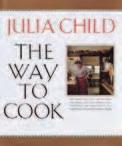
mont, and the Asian section spans about 50 feet. San Jose’s Little Saigon is a bit more spread out (than Westminster’s), but that’s kind of nice. There are so many wonderful places in the Story Road area. On North Fourth Street, Mi Quang Co Thao sells this obscure noodle dish that I like, and the scene kind of reminds me of places in Vietnam. In Milpitas, everyone thinks of Koi Palace on Barber Lane. But there’s a little sleepy place called Truong Thanh Vietnamese Restaurant. Their banh khot is great.
“Beyond the North Wind” by Darra Goldstein: It’s about Russian food in a way that you’ve never experienced it. And it’s full of Darra’s wit and knowledge.
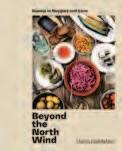
AWe assume that the mainstreaming of Vietnamese food is only happening on the West Coast. But in Minneapolis, I visited Hai Hai, a Vietnamese street food-inspired restaurant from James Beard semifinalist Christina Nguyen. And in Birmingham, Alabama, and Atlanta, Georgia, there were well-stocked Asian markets with ingredients that I seldom see on the West Coast — Megachef oyster sauce from Thailand and Cholimex chile sauces from Vietnam.
QHow does the Viet food scene in the South Bay compare with SoCal’s Little Saigon, where you grew up?
AThe exciting thing about the Bay Area is that you can go to the Lucky supermarket in Fre-
QWe can’t ask you about restaurants without asking about markets. Do you have a favorite?
AOne of my favorite independent markets is Dai Thanh Market on South Second Street in San Jose. It reminds me of the vibe of being in Vietnam. It’s low key and airy. The people are serious, but kind. And it’s well-stocked with produce, condiments, noodles, rice paper, everything.
QYou keep 12 different bottles of fish sauce in your pantry. Why? Should we?
AYou don’t need to have 12 bottles. I do because there are so many different brands now — Squid, Red Boat, Dynasty — and each offers something a little different. Some are more robust, while others have more depth and umami.
“My Korea” by Hooni Kim: Kim is a chef in New York, and the book is full of cool tips, info on Korean traditions and accessible chef-y things that you can do in your home kitchen.
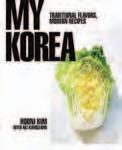
“Vegetable Kingdom” by Bryant Terry: I love the fact that it’s meatless and cross-cultural and vibrant. He makes it exciting.

 BY JESSICA YADEGARAN
BY JESSICA YADEGARAN
are a lot like restaurants. They require long hours and yield low profits. And even though neither would be possible without a large and talented team, there is often only one name gracing the cover.
But a chef or author wouldn’t be able to produce any cookbook — from the tiniest Instant Pot collection to a French tome shot on location — without recipe testers, co-authors, photographers, stylists, designers and art directors. Are we forgetting anyone? Probably.
So, why do cookbook makers do it? For the love of the medium. To build a portfolio. To get one’s name out there. Co-writers, especially, are in a good position to gain recognition, at least within the industry, as most chefs aren’t known for their writing skills — or the time to develop them.
Berkeley’s Sarah Henry, co-author of Preeti Mistry’s 2017 memoir-style “The Juhu Beach Club Cookbook,” says her role is “to make the chef shine on the page in the same way they do on the plate, whether it’s through the force of their personality, the creativity in their food or the culture they’ve created in their restaurant community.”
To write the narrative, which is organized by feelings rather than courses and delves into Mistry’s background as a queer immigrant, Henry spent six months tucked into a corner table at the nowshuttered Oakland restaurant, interviewing Mistry
So much goes on behind the scenes at a cookbook photo shoot, says photographer Nader Khouri, far right.

about everything from social justice to her culinary journey.
Then Henry would go home, transcribe the recorded interview, come back with follow-up questions and do it all over again. She says by the end, they were dear friends — they still are — and she could practically finish Mistry’s thoughts on the page.
Steve Siegelman has followed this collaborative format dozens of times over his 25-year career. The Berkeley food writer has co-written or ghost-written 38 cookbooks, including 14 for Williams-Sonoma as well as “Mourad: New Moroccan” with Mourad Lahlou and “The Pizza Bible” with Tony Gemignani. Both chefs were generous with their time and stories; others, not so much.

“A person … I worked with only texted and didn’t even email,” he says.
Siegelman has a great story about Gemignani: While working on the first chapter’s master dough recipe, which takes two and a half days to complete, Siegelman attempted to replicate it at home, but his efforts were falling short. He says they yielded flat and chewy “amateur” pizza. So Gemignani told him to make two dough balls — one for each of them — and bring them into the restaurant.
“I watched him work his dough without even looking at it,” he says. “It instantly surrendered into this perfect circle, and when we baked our pizzas, his rose twice as high as mine and actually tasted better. It was incredible. His ‘pizza-whisperer touch’ made all the difference.”
Of all the culinary content he has written, it is the recipe headnote — the description at the top — that remains Siegelman’s favorite. “I often think of them like haikus: With just a few words, they can offer something compelling or intriguing — a new idea, a surprising insight, a mini-recipe before the recipe — that makes the reader think, ‘Okay, I’ve got to try this.’”
Ultimately, it is the imagery in a cookbook that makes our mouths water. That’s where a food stylist comes in. Long before the food photographer starts clicking away, a food stylist tests recipes, shops for groceries and cooks the dishes, six to 10 a day for a typical






week-long shoot. Then, she uses tricks of the trade to make them look stunning.

“Things get passed down, but it’s always a learning process,” says Marin County’s Kim Kissling, who has styled more than 80 cookbooks, including “Boulevard: The Cookbook” and Michael Recchuiti’s “Chocolate Obsession,” since finishing culinary school in 1995. Back then, photographers shot with film, so fake food was common in the studio. Ice cream? Easy: Crisco, powdered sugar, corn syrup.
With digital came real ingredients, making the stylist’s job more challenging. But that has never stopped Kissling from making her food — including quick-melting ice cream — look perfect.
While styling Jennie Schacht’s 2013 “I Scream Sandwich” — 99 recipes in five days — Kissling figured out a way to prep her scoops without a single drip. She stood on an apple box and bent down into a dipping cabinet — an open freezer — which held her ice cream below the freeze line. “If you’re trying to make cones and stacked scoops look beautiful, you work upside down,” she said. Chocolate bloom? She eliminates that whitish coating with heat from a very low torch. Voila, sheen. Need steam? Turn off that boiling pot of liquid and instantly get a puff of steam. Melting cheese for that gooey, grilled cheese money shot? “I brush it with hot water or Pine Sol,” she says. “I don’t know why that works, but it does, especially on white cheese.”
One of Kissling’s favorite gigs was working on 2019’s “Weber’s Ultimate Grilling” with Jamie Purviance, who was on set the entire time. “I learned so much from him about grilling,” she says. “It was a fascinating, full-on education for me.”
The 125 recipes were styled and shot in Burbank in the heat of summer. In addition to designating one person to clean the grill after every steak and burger
Sara Remington has photographed more than 50 cookbooks, but she also shoot ads. She traveled to Nashville, for example, to photograph “campers” in the woods for a Cracker Barrel ad campaign.
shoot, Kissling had her assistant purchase and drive down meat from Kissling’s most trusted source: San Francisco’s Golden Gate Meat Co. “I trust them,” she says. “They get me the most beautiful stuff.”
A cookbook’s art director often hands out mood boards to frame that beautiful stuff in relation to the text. That’s where photographers like San Francisco’s Nader Khouri come in. As a former photojournalist, Khouri is always looking for action in his subjects, even beverages. For 2017’s “Kombucha, Kefir and Beyond,” Khouri worked with a prop stylist to produce just the right aesthetic for the active, fizzing world of fermented drinks.
“I want to help people see static food or beverages a bit differently, so part of that is to show the actual process,” says Khouri, who spent time with co-author Alex Lewin learning how to make the drinks. “A floating scoby, foaming lassi and the perfect strainer shot of drips in motion. You sit and wait for every drip to come down. The detail is so fine, and you need
to show that.”
For a typical 200 to 400-page cookbook, Alameda’s Sara Remington may take 1,000 pictures a day, and deliver only 600 final images at the end of a six-day shoot. Remington, who has photographed more than 50 cookbooks, counts her far-flung assignments as the most rewarding. She has photographed vineyards in the Veneto for Shelly Lindgren’s “SPQR” and monks making vegan meals in southern France for an upcoming book on the Buddhist monastery, Plum Village.


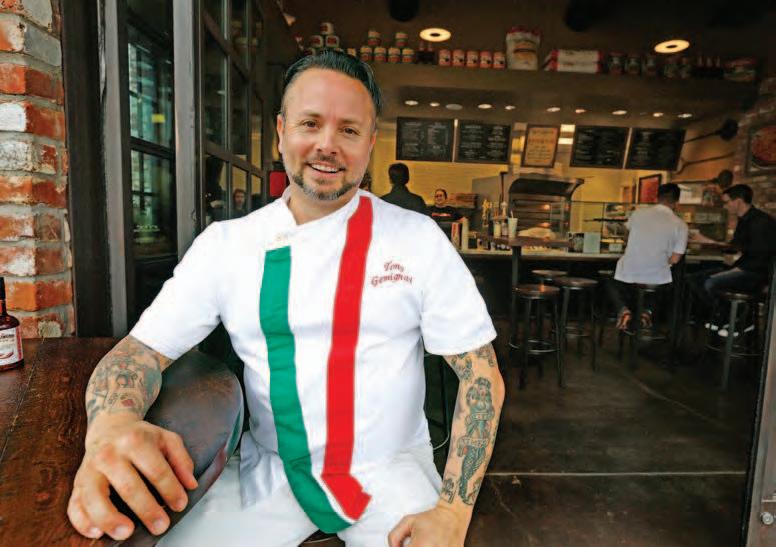
But it was traveling to southwestern Italy to shoot “My Calabria” with Rosetta Costantino and Janet Fletcher that remains the most memorable.
“I feel so lucky to have had that experience,” Remington says of watching Costantino create seasonal pastas and breads from scratch. “Meeting her and learning about this traditionally poor area where they have long used what simple ingredients they had on hand to make the best thing you’ve ever tasted. It changes your life for the better.”
 JESSICA HISCHE
JESSICA HISCHE
After a childhood spent drawing obsessively in rural Pennsylvania, Oakland’s Jessica Hische grew up to become a creator of fonts, love-themed postage stamps, film title typography — for “Moonrise Kingdom,” among others — and book covers. She never imagined she’d be writing — and, of course, lettering and illustrating — children’s books. But then she became a mother of three. Her latest book, “Tomorrow I’ll Be Kind” — the follow-up to her 2018 picture book, “Tomorrow I’ll Be Brave” — features a bunny and other small creatures practicing kindness.

QYou’re a lettering artist. How did you come to do children’s books?
AWhen my daughter was about nine months old, we were reading endless children’s books to her at bedtime, and I just wanted more books of different varieties and flavor. So I started thinking about what I would want to read to her. I was in therapy at the time for anxiety — I always hated messing up, and my daughter is the same. If she makes one mistake when she’s drawing, she throws it out. So I wanted to write about self-forgiveness. With the “tomorrow I’ll be” structure, it’s like checking in on yourself at the end of the day, processing
“We Found a Hat” By Jon Klassen: I love Jon Klassen’s sense of humor. This is my favorite of his hat series.
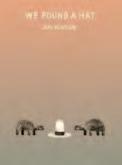
QWhy a bunny as the main character?
AI’ve always really hated drawing people. And I was afraid I’d get pinned into a corner. If it was a boy main character, maybe girls wouldn’t pick it up, and vice versa. I wanted it to be very ambiguous. And when my daughter was little, we called her Baby Bun!
QHow do you feel about Comic Sans?
“Little Owl Lost” by Chris Haughton: All three of my kids were/are obsessed with this book.

“The Dead Bird” by Margaret Wise Brown: A super straightforward book about death that has a moment that makes me cry.


feelings, setting intentions — and if you don’t achieve your goals, tomorrow you can try again.
QHow do the books differ?
AThe art in the second book is much more complex. It’s grown along with my daughter!
“Brave” was more for a very young child. The illustrations in the new book are super bright and engaging (and) there are multiple talking points on each page. I wanted to show universal values anyone could teach their kids. I feel like it could be an end-of-theday mantra. I made a joke when it came out that I wanted to send a copy to everyone in Congress!
AIt’s low-hanging fruit! Comic Sans is a very well-built font that gets used inappropriately by lots of people. Papyrus is more ragged on. There was a “Saturday Night Live” bit where Ryan Gosling was very upset that the movie “Avatar” was using Papyrus. Graphic arts people love it when normal people talk about fonts.
QWhat are some of your favorite independent bookstores?
APegasus on College Avenue (in Oakland). We have a total ritual. We put our names on the wait list at La Note then go over to Pegasus. Same thing in Berkeley. We put our name on the list at Saul’s and go to Books Inc.
“The Tea Party in the Woods” by Akiko Miyakoshi: The artwork is so beautiful. The spread with all the slices of pie made me gasp the first time I saw it.
“Frog and Toad: The Complete Collection” by Arnold Lobel: The writing is brilliantly simple, but also so funny at times.

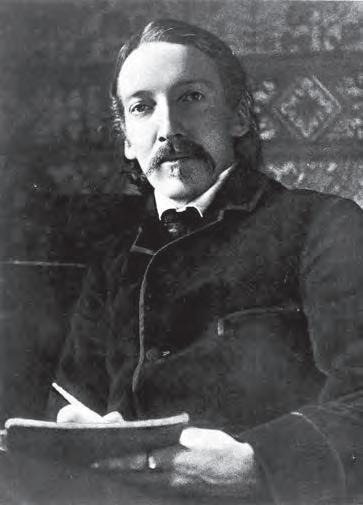
Shelteringinplacethisspringtohide outfromthecoronavirus,I’vebeen keepingbusybyreadingescapist literature.Ayoungerversionof myselfmighthavecurledupwith acopyofRobertLouisStevenson’s“TreasureIsland.”Andinalessscary time,Imighthavedrivendownthecoast toexploretheforestedhillsandrocky outcroppingsofPointLobosStateNaturalReserve,justsouthofCarmel,tosee ifIcoulddetectanysimilaritiestothe topographyofStevenson’sperennially popularadventurebook.
WhywouldanyonelookforTreasureIslandatPointLobos?Because Edinburgh-bornStevenson,oneofthe mostbelovedauthorsinthehistoryof Englishletters,spentsomequalitytimein NorthernCalifornia—andfanshavelong speculatedthatthewave-sweptcoastlineof PointLobos,withitslonelytrailsandhidden coves,mighthavebeentheinspirationforhis fictionalpirates’lair.
TheauthorcametoCaliforniain1879in pursuitofFannyOsbourne,theindependently mindedAmericanwoman,11yearshissenior andalreadymarriedwithtwochildren, whomhehadmetandfalleninlovewith inFranceyearsearlier.ThecouplemarriedthefollowingyearinSanFrancisco. Theyhoneymoonedfortwomonthsin anabandonedminebunkhouseonthe sideofMountSt.Helenainnorthern NapaCounty.Stevensondocumented thosehappydaysinhismemoir“The SilveradoSquatters.”
TheareaisnowpartoftheRobert LouisStevensonStatePark.Astone memorialneartheparkentrance markstheplacewherethebunkhouse oncestood,andafive-miletrailthrough denseevergreenforestandchaparral leadstothesummitofMountSt.Helena anditspanoramicviewsoftheBayArea andmuchofNorthernCalifornia. Readingthebooksofferssomeideal escapism.Inlessviraltimes,youcanalsovisit
In“TheSilveradoSquatters”RobertLouis Stevensondocumentedhistwo-month honeymoonwithwife,FannyOsbourne, inanabandonedminebunkhouse onthesideofMountSt.Helena.
In1894,hisfans inSanFrancisco erectedastone monumentinhis honor...
RobertLouisStevensonStatePark
4824LakeCountyHwy,Calistoga (707)942-4575 parks.ca.gov
OldLawleyTollRoad* “Theroad mountsthenearshoulderofMount SaintHelena,boundnorthward intoLakeCounty.Inoneplaceit skirtsalongtheedgeofanarrow anddeepcanyon,filledwithtrees...”
OldFaithfulGeyserofCalifornia
1299TubbsLn,Calistoga
PetrifiedForest
1400PetrifiedForestRd.,Calistoga (707)942-6667
petrifiedforest.org
SchramsbergVineyards
1400SchramsbergRd.,Calistoga (707)942-4558
schramsberg.com


BaleGristMillStateHistoricPark, 3369StHelenaHwy, St.Helena
BeringerVineyards
...toppedwithasculptureofasailing shipliketheschoonerHispaniola thattookLongJohnSilverandhis piratecrewtoTreasureIslandalong withtheyoungstowaway, JimHawkins.
NapaValleyRailroadDepot 1458LincolnAve,Calistoga
SharpsteenMuseum
1311WashingtonSt.,Calistoga (707)942-5911
sharpsteenmuseum.org
2000MainSt.,St.Helena www.beringer.com
RobertLouisStevensonMuseum
1490LibraryLane,St.Helena (707)963-3757
stevensonmuseum.org
Asmallcottageis oneoftwobuildings thathassurvived fromwhentheresort townwasfoundedin 1862.Thelocalswill tellyouthat StevensonandFanny “mighthave”once stayedinthecottage, butnobodyknows forsure.
a scale model of the bunkhouse at the Robert Louis Stevenson museum in St. Helena. Inside this unassuming building, you’ll find a wealth of information and artifacts relating to the author’s life, as well as a 6,000-volume library of books by and about him and books and other items from his personal collection.

You’ll also find a small section on him at the Sharpsteen Museum in downtown Calistoga. A small cottage adjoining the museum is one of two buildings that date back to 1862, when journalist Sam Brannan founded the resort town with his Hot Springs Hotel. The locals will tell you that Stevenson and Fanny “might have” once stayed in the cottage, but nobody knows for sure.
What they do know is that the couple enjoyed tastings at two Napa Valley wineries that still welcome the public today: Beringer in St. Helena and Schramsberg in Calistoga.
They also enjoyed visiting with “Petrified Charlie,” a Swedish homesteader and local character — Charles Evans — who discovered an ancient fossilized redwood forest on his land in 1870. The Petrified Forest is now
a privately owned park, open to visitors who enjoy its picturesque hiking trails and guides who explain how the forest became petrified as it lay buried under ash from an eruption of Mount St. Helena more than three million years ago.

“The Silverado Squatters” isn’t the only work Stevenson penned about his stay in California. Before marrying Fanny, he lived in Monterey and wrote an appreciation of “The Old Pacific Capital” that became a chapter in his book “Across the Plains,” which documents his overland journey from the East Coast to California.
Haunted throughout his life by ill health, Stevenson spent most of his time in Monterey recuperating from the arduous journey west. He lived at Girardin’s French House for three months in 1879. The two-story adobe building, which sits on a quiet street in downtown Monterey, dates back to the era when California was part of Mexico and Monterey was its capital. Now fully restored and rechristened the Stevenson House State Historical Museum, the house contains exhibits and artifacts from the era, including several rooms devoted to Stevensonia.

From the French House, you can walk the few short blocks that would have brought him to the shore of Monterey Bay, where he might have gazed down the coast and seen a landscape much like the description he later wrote of the fictional Treasure Island:
“Grey-coloured woods covered a large part of the surface. This even tint was indeed broken up by streaks of yellow sand-break in the lower lands, and by many tall trees of the pine family, out-topping the others.”

Stevenson was flat broke and completely unknown when he lived in Northern California. He was yet to become the revered author of “Treasure Island,” “Kidnapped,” “The Strange Case of Dr. Jekyll and Mr. Hyde” and “A Child’s Garden of Verses.” Nine years later, his fame and fortune assured, Stevenson returned to the Bay Area one last time and chartered a yacht from Oakland millionaire Sam Merritt for a journey to the South Seas, where he spent his final years.
Three years after Stevenson’s death in 1894, his fans in San Francisco erected a stone monument in his honor, topped with a sculpture of a sailing ship, like the schooner Hispaniola that took Long John Silver and his pirate crew to Treasure Island along with the young stowaway, Jim Hawkins.
The “Stevenson Galleon,” as it’s called, was still standing in Portsmouth Square in San Francisco’s Chinatown when, according to legend, two young poets, out on the town, filled it with violets in honor of their literary forebear. George Sterling famously went on to christen San Francisco the “cool, grey city of love.” And his date, Ina Coolbrith, became California’s first poet laureate. As Oakland’s city librarian some years later, she mentored young readers, among them Jack London and Isadora Duncan.
And the beat goes on. The Stevenson Galleon still stands in Portsmouth Square, near the spot where Commodore John B. Montgomery of the USS Portsmouth raised the first American flag in California in 1846. But it’s been a while since anyone filled the old schooner with violets.
All these locations are temporarily closed in accordance with local and state guidelines for social distancing during the coronavirus pandemic. Check their websites for status updates.
Robert Louis Stevenson State Park: 4824 Lake County Highway, Calistoga; www.parks.ca.gov.
Robert Louis Stevenson Museum: 1490 Library Lane, St. Helena; https://stevensonmuseum.org.
Sharpsteen Museum: 1311 Washington St., Calistoga; www. sharpsteenmuseum.org.
Beringer Vineyards: 2000 Main St., St. Helena; www.beringer.com.
Schramsberg Vineyards: 1400 Schramsberg Road, Calistoga; www. schramsberg.com
Petrified Forest: 1400 Petrified Forest Road, Calistoga; www. petrifiedforest.org
Stevenson House State Historical Museum: 530 Houston St., Monterey; www.parks.ca.gov
Point Lobos State Natural Reserve: Three miles south of Carmel on Highway 1, www.parks. ca.gov
A monument in Robert Louis Stevenson State Park marks the area where the famous Scottish writer, author of “Treasure Island,” spent his 1880 honeymoon in Calistoga.

 BY LINDA ZAVORAL, JOAN MORRIS AND MARTHA ROSS
BY LINDA ZAVORAL, JOAN MORRIS AND MARTHA ROSS
Need customer service at a department store, hardware store, big-box store? That can be tough to find these days. Need recommendations for a good book to read? Simply ask any Bay Area bookseller or librarian. These people know books, adore books ... devour books. We always look to them for great reads in our genres of choice. And for gift selections (What’s new in sci-fi? What should the nieces and nephews be reading?). And for those times when we need to shed old reading habits and expand our horizons. We checked in with a dozen book experts to find out what’s fresh, what’s inspiring, what’s brilliantly written. Melvil Dewey, famous for a certain decimal system, would be proud of this array.
JANE TYSKA/STAFF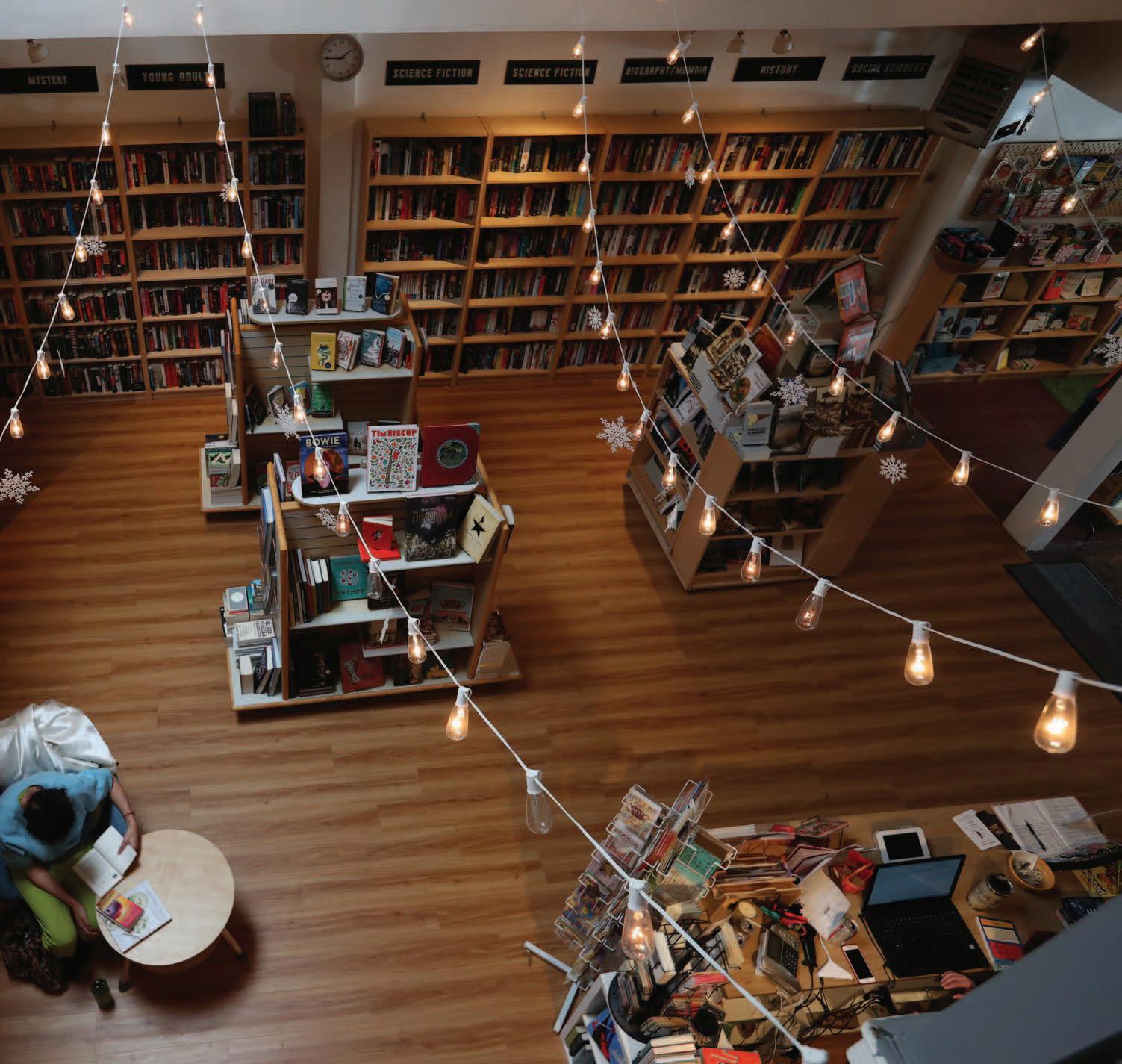
Karen Finlay had been looking forward to celebrating the first anniversary of her new Alibi Books in Vallejo next month, but with the uncertainty in the world, she has pivoted to online sales with curbside pick up, a book club — last month’s pick was the hilarious “Lamb” by Christopher Moore — and online story time for children.

“A lot of people are reading books like ‘The Stand’ by Stephen King, ‘The Plague’ by Albert Camus or contemporary dystopian fiction like ‘Station Eleven’ by Emily St. John Mandel — all great books,” Finlay says, “but I’ve been recommending books that are more hopeful, that can uplift spirits during these difficult times. I also think it’s a great time to get around to reading the classics or the award winners you’ve been meaning to read forever.”
“I Capture the Castle” by Dodie Smith (1948): An absolutely charming book, perfect for cozying up under a blanket to escape the modern world for a bit. Set in 1934, it’s the diary of Cassandra Mortmain, who lives in a ruined old castle in England with her eccentric and poor family. Even while she is facing hardships, Cassandra’s diary is both funny and poignant. A nice reminder that humans have faced hard times before and persevered.
“A Tree Grows in Brooklyn” by Betty Smith (1943): Considered one of the most beloved books of all time, the classic story of the Nolans in an early 20th century Williamsburg tenement will inspire you and give you hope, much like the scrappy tree in the title. It also has one of my favorite quotes: ‘The world was hers for the reading.’ Another great reminder of endurance and community, the things that see us through.
JANE TYSKA/STAFF“The Overstory” by Richard Powers (2019): Continuing with the tree theme, this was our March Book Club pick — chosen before isolation — and it was a great choice. The intertwined stories, much like the roots of the trees at the heart of this novel, are beautifully written with a powerful message about ecology. There is solace knowing that the trees have been speaking for billions of years and will hopefully continue to do so.
“All the Light We Cannot See,” Anthony Doerr (2014): Winner of the 2015 Pulitzer Prize for fiction, this extraordinary novel set in World War II France is one of my favorites. Beautiful and heart
wrenching, this book will stay with you. You will find yourself thinking about Marie-Laure and Werner long after you finish the last page. Cue up ‘Clair de Lune’ by Debussy while reading it and give yourself a transcendent reading experience.
Most books these days have subtitles. Hicklebee’s was way ahead of that trend. The business was founded 41
years ago, primarily as a children’s bookstore, in San Jose’s Willow Glen district as “Hicklebee’s: The Metamorphosis of the Bookworm.” One move and thousands of bookworms later, Hicklebee’s has expanded its adult offerings, too. These suggestions — for all ages — come from co-owner Valerie Lewis and staffer Carol Doup Muller, a former Mercury News books editor.
“One Little Bag” by Henry Cole: A wordless picture book shows the amazing journey of a little brown paper bag — from forest, to lunch bag, to lamp shade. In a loving, multi-generation tribute to conservation, Cole’s intricate art encourages the reader
to pause and delight in every turn of the page. (Grades K-2)
“The One and Only Bob” by Katherine Applegate: Bob, the dog with attitude who was introduced in the Newbery-winning best-seller “The One and Only Ivan,” gets a story of his own. With zoo friends Ivan and Ruby, Bob sets out to look for his longlost sister. As a hurricane looms, he’ll find courage he never knew he had — and the true meaning of family. (Grades 3-6)
“City Spies” by James Ponti: Five international kids, under the tutelage of a mysterious man named Mother, come together for a spy mission in Paris. A bit of an
Ocean’s 11 caper for kids — full of humor, hackers and surprisingly relevant high stakes. Grades 5-8)
“Sin Eater” by Megan Campisi: In a dystopian and warped Elizabethan era, 14-year-old May must hear deathbed confessions and then publicly eat foods that represent the departed’s sins. Scorned, isolated and forbidden to speak, she nevertheless persists — solving a murder at the Tudor-ish court and finding a community for herself. (High school)
“The Story of More” by Hope Jahren: A world-class geobiologist (and author of the exquisite memoir “Lab Girl”) explains the climate crisis in crystal-clear, entertaining prose. The best professor you’ve never had, she convinces readers that our world can do with less — and still feel full. (Adults nonfiction)
Kepler’s Books first opened its doors in Menlo Park in 1955.
 JIM GENSHEIMER/ STAFF FILE
JIM GENSHEIMER/ STAFF FILE
BERKELEY
Mrs. Dalloway’s was founded in 2004, when longtime friends Marion Abbott and Ann Leyhe decided to pool their passions, talents and resources. The store is named after the protagonist of Virginia Woolf’s 1925 novel, which began, “Mrs. Dalloway said she would buy the flowers herself.”
Staffer Hut Landon says they’ve seen a huge surge in online orders, helped, no doubt, by the store’s website’s attempts to replicate that feeling of browsing in a cozy shop and finding new books to love. These are Landon’s picks for new books coming out in May and June:
“Book of Longings” by Sue Monk Kidd: Kidd, author of
“Secret Life of Bees,” offers a fascinating feminist reimagining of the New Testament in which Jesus of Nazareth is married, and his wife Ana — the book’s protagonist — is a writer. This should be one of the year’s big books.
“Utopia Avenue” by David Mitchell: A novel about the life and times of a rock band that emerges from London’s psychedelic scene in 1967 and embarks on a meteoric journey from the seedy clubs of Soho, a TV debut on “Top of the Pops,” glory in Amsterdam, prison in Rome and a fateful American sojourn that includes San Francisco during the autumn of ’68. (Mitchell is the author of “Cloud Atlas.”)
“Big Summer” by Jennifer Weiner: A plus-size Instagram influencer is surprisingly asked to be maid of honor at the Cape Cod wedding of an old college frenemy. This is a great summer beach read that mixes romance and mystery with Weiner’s humor.
“The Ballad of Songbirds and Snakes: A Hunger Games Novel” by Suzanne Collins: This prequel revisits the world of Panem 64 years before the events of “The Hunger Games” and features Coriolanus Snow, who is now a teenager himself and participating in the 10th Hunger Games. The once-mighty house of Snow has fallen on hard times, its fate hanging on the slender chance that Coriolanus will be able to out charm, outwit and outmaneuver his fellow students.”
MENLO PARK
Kepler’s holds a unique place in the hearts of literature-loving Peninsula residents and a pioneering position in the bookstore industry. The shop, which was founded in 1955 by
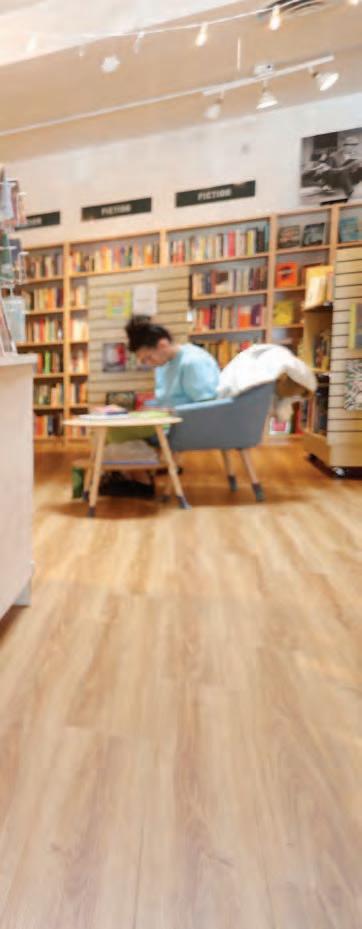
peace activist Roy Kepler and run for years by his son, Clark, was rescued by distraught customers when closure loomed in 2005.
At the helm these days is CEO Praveen Madan, who saw a “mind-boggling” number of website orders starting March 17, when they had to close the doors to onsite customers. He redeployed employees to work from home, processing orders seven days a week. “Overnight, we’ve become an internet operation.”
Here are Kepler’s reading recs:
“The Boy, the Mole, the Fox and the Horse” by Charlie Mackesy: This whimsical little book, reminiscent of treasured classics such as “Winnie-the-Pooh” and “The Little Prince,” is full of wonderful things. The conversations between four creatures about friendship, kindness and courage are depicted with humor and grace; the ink and watercolor drawings are miraculous and magical. (For all ages)
“Dear Edward” by Ann Napolitano: Before his family trip to Los Angeles from New York, 12-year-old Eddie Adler was just an ordinary boy, with a mother, father and a brother. After the plane crashes, the only survivor, Eddie, becomes Edward, the miracle boy who lived. When the other passengers’ family members write to Edward because he was the last one to see or remember their loved ones alive, Edward’s deeply personal story of recovery comes alive with universal parallels. “Dear Edward” is like a lantern leading us out of darkness; a beautiful, poignant story of community and the power of kindness.
“Running with Sherman: The Donkey with the Heart of a Hero” by Christopher McDougall: A heartwarming story about a lonely and traumatized donkey who is nursed back to life and given purpose by McDougall and a large, varied group that includes an Amish community, female ultramarathoners and farm animals. I loved it!
“The Starless Sea” by Erin Morgenstern: From the best-selling author of the “Night Cir-
cus” comes an imaginative and fantastical tale about a boy who finds a mysterious book and is subsequently thrust into a hidden underground world full of magic and pirates, liars and lovers. This book is a pure escapist fantasy and absolutely enchanting to read.
“My Bison” by Gaya Wisniewski: Artist and storyteller Wisniewski’s tender story of friendship between a little girl and a bison invites readers to curl up somewhere cozy. Soft charcoal and ink illustrations show their friendship blooming as they enjoy each other’s company with a cup of tea or wander whimsically through the forest. This quiet picture book is a comforting tale that captures the magical and timeless
bond that can grow between humans and animals. (Kindergarten through third grade)

Reading has always been a passion for Casey Coonerty Protti, the second-generation owner of Bookshop Santa Cruz. Over the last weeks, the store has turned to web orders and curbside pickup, as well as fundraising for its Keep Kids Reading program, which gives books to kids who lack access during the school and library
shutdowns. Coonerty Protti says she has been polishing the vintage wooden rocking horse, which has lived in the bookstore for its entire 53 years, and misses seeing kids reading.
“Beautiful Ruins” by Jess Walter: If you need to escape, transport yourself to the Italian coastline for a love story centered across decades with cinematic and emotional twists and turns that will keep you reading to the very end.
“Nothing to See Here” by Kevin Wilson: No one is quite as imaginative and funny as Kevin Wilson — and “Nothing to See Here” is both, in spades. A long-lost friend is hired as a nanny to a wealthy
and powerful couple who need to keep their children hidden from the limelight. What progresses is a tale about belonging and acceptance in a wholly original narrative.
“Less” by Andrew Sean Greer: My favorite thing about travel is seeing the world through different eyes, but also realizing the shared human experience. Arthur Less is a brokenhearted man who accepts every half-baked invitation to literary conferences and meetings around the globe to escape the wedding of a former boyfriend. We become armchair travelers to his journey and learn that we must run to, not away, from who we truly are.
CAMPBELL, MOUNTAIN VIEW, PALO ALTO, ALAMEDA, BERKELEY, SAN FRANCISCO
Talk about the original brick-and-mortar bookstore. Books Inc. has a lineage that dates back to 1851, making it the oldest independent bookseller in the West. Over the last two decades, owner Michael Tucker shepherded the chain through stormy waters — a bankruptcy, the industry changes, store closures — and helped it not just survive, but thrive. During the
COVID-19 crisis, Books Inc. has been accepting online orders with free shipping.
Another” by Jodi Taylor: This is the first book in the “Chronicles of St. Mary’s” fantasy series about scholars who time-travel to notable events in the past to clear up history questions. Told through the eyes of the newest recruit to this ultra-secret group, Madeleine (Max) Maxwell, the stories are filled with adventure, drama, comedy and historical trivia and also include an evil time traveler determined to destroy the group.
(Bernie, operations team Books Inc. HQ)
“Three Hours in Paris” by
Now in the hands of secondgeneration owner Casey Coonerty Protti, Bookshop Santa Cruz draws book lovers in this beachside town.
Cara Black: Local treasure Cara Black introduces us to a plucky new heroine, Kate Rees. As with Black’s Aimee Leduc series, Paris is a main character. But this is the Paris of 1940, and Rees’ mission could change the course of the war. (Ingrid, manager, Laurel Village store in San Francisco)
“The Black Flamingo” by Dean Atta: Michael is a mixed-race gay teen trying to figure out where he belongs. “The Black Flamingo” gave me so many good feels, I literally hugged it after I finished. (Melanie, children’s frontlist buyer)
“The Happy Ever After Playlist” by Abby Jimenez: Two years after losing her fiancé, Sloan finds herself caring for a dog that unexpectedly crosses her path and starts to feel like herself again. However, Jason, the dog’s owner, reaches out after a week of unanswered texts. He wants his dog back. This book made me smile and made my heart feel incredibly full. (Connie, children’s book specialist, Opera Plaza store in San Francisco)
WALNUT CREEK
When longtime friends Shoshana Smith and Marian Adducci opened their independent children’s book store in Walnut Creek last year, they gave locals something they had long missed: a downtown bookstore that could serve as a gathering place for people who love to read.

“I’m super into the idea that book stores can be a ‘third place’ for a community,” Smith said. The name? Imagine a child reading by flashlight long past bedtime.
“The Princess and the Pony” by Kate Beaton: Princess Pinecone’s birthday is coming up, and like any sensible young warrior princess, she asks for a mighty
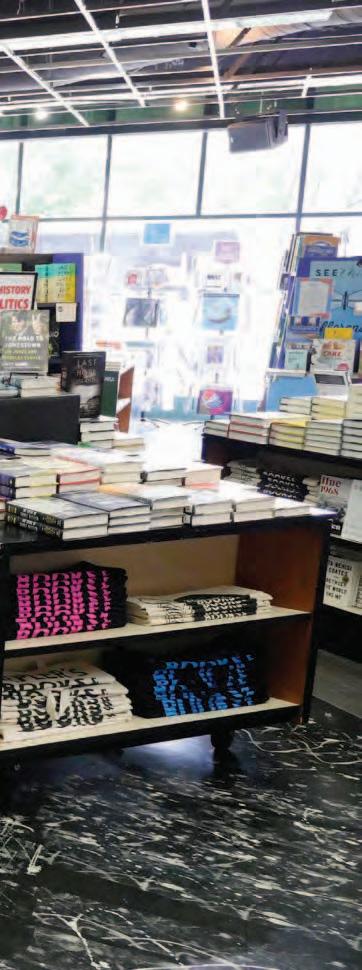
steed to ride into battle. Unfortunately, the steed she gets is more roly-poly pony. Will (they) find a way to win the day after all? We love this silly, girl-power picture book about defying stereotypes and fat ponies! (Kindergarten to second grade)
“Pie in the Sky” by Remy Lai: This book follows Jingwen, who moves to a new country and doesn’t speak English. The only thing that makes him feel better is baking with his little brother, but his mom has made it clear: No using the oven when she’s at work — and it seems like she’s always at work. (Middle grade)
“The Poet X” by Elizabeth Acevedo: Xiomara knows how to cut people down to size, but when it comes to what she’s feeling or thinking — about family, about boys, about religion, about poetry — it’s safer to turn to her journal than to speak up. An invitation to her school’s slam poetry club might force a change. (For teens)
“Seafire” by Natalie C. Parker: Sisterhood and female pirates, ahoy! Caledonia is the captain of her all-female crew, determined to foil the nautical warlord Aric Athair, who slaughtered her friends and family when she was young. But when one of Aric’s own defects and asks to join her crew, can she trust him and take down Aric once and for all, or is it all a trap? Fierce, funny, fantastic.
(For teens)
DANVILLE
During his 25 years running his popular shop, Michael Barnard has weathered all the challenges besetting independent book stores. Rakestraw has
thrived, thanks to its atmosphere, which offers an intimate space where book lovers can browse and meet favorite authors passing through on book tours. In recent weeks, Barnard has kept busy, filling online orders and trying to keep staff on payroll.

“I still love books,” he said. “Every day, there are always new ones, and I love sharing that with people.”
“A Star Is Bored” by Byron Lane: Drawing inspiration from his time as Carrie Fisher’s person-
al assistant, Lane tells the story of Charlie, who becomes an eccentric Hollywood star’s assistant. (It’s) as witty and clever and heartfelt a novel as any I’ve read in a long time. Come for the dish, stay for the feels.
“The Jane Austen Society” by Natalie Jenner: Set in the tiny English village of Chawton, Jenner’s first novel introduces a beautifully drawn cast of characters who — inspired by their love of Jane Austen’s novels — come together to rescue her last home.
Fans of both Jane Austen and old favorites such as “The Guernsey Literary and Potato Peel Pie Society” will love “The Jane Austen Society.” Pour yourself a cuppa and make your escape.
“Rules for Visiting” by Jessica Francis Kane: May is 40, and she’s feeling just a bit, maybe more than a bit, detached from her life. When she receives an unexpected gift of time off, she uses it to reconnect with four old friends and, in the process, herself.
OAKLAND
Growing up in Kentucky, Brad Johnson always was a reader. After receiving a Ph.D. in philosophy and literature from the University of Glasgow, he made his way back to the U.S. and landed a job as manager at Diesel Books, the beloved Rockridge

bookstore. When owners Alison Reid and John Evans decided to sell, loans from more than 50 community members helped Johnson buy out the book inventory, so he could keep the store open under a new name.
“Death of Vivek Oji” by Akwaeke Emezi: One of the most anticipated novels of the year by one of Nigeria’s brightest literary stars, this is a beautiful story of a family coming to terms with a child they neither really know nor understand.
“Grove” by Esther Kinsky: Published by our dear Oakland friends at Transit Books, “Grove” is a follow-up to one of our favorite books of the past few years, Kinsky’s “River.” The narrator travels to a small village southeast of Rome in winter and embarks on walks and outings, exploring the banal and the sublime.
“Vesper Flights” by Helen Macdonald: A follow-up to Macdonald’s massively best-selling “H Is for Hawk.” Meditating on notions of captivity and freedom, immigration and flight, she invites us into her most intimate experiences: observing the massive migration of songbirds from the top of the Empire State Building, watching tens of thousands of cranes in Hungary, seeking the last golden orioles in Suffolk’s poplar forests.
“Desert Notebooks: A Road Map for the End of Time” by Ben Ehrenreich: National Magazine Award winner Ehrenreich layers climate science, mythologies, nature writing and personal experiences into a stunning reckoning with our current moment and with the literal and figurative end of time. Ehrenreich draws on the stark grandeur of the desert to ask how we might reckon with the uncertainty that surrounds us.
ORINDA
Pat Rudebusch was a longtime customer before she began working at her hometown book store five years ago. She finally bought the store in October, fulfilling a lifelong love of books, especially ones that “cause me to question what I believe or the person I think I am.” As a reader, she dives into fiction and nonfiction phases, depending on her mood and on the state of the world.
“Fiction forces you to slow down,” she said, “and disconnect from everyday life and pressures.”
“The Second” by Christina Clancy: A summer home on Cape Cod that has been in the Cullen family for generations holds the power to bring three siblings together and tear them apart. Both happy memories and kept secrets influence the actions of the nowadult siblings in ways that they never imagined.
“A Good Neighborhood” by Terese Anne Fowler: The threads start to fray in the closeknit community of Oak Knoll, when a new family tears down the 1950s era home that is typical of this neighborhood to build a McMansion. A result of the cavalier approach to constructing their new home is the demise of a neighbor’s historic oak tree.
“The Authenticity Project” by Clare Pooley: “How many of us show our authentic selves?” This is the question asked by Julian Jessop, an eccentric artist who launches The Authenticity Project. Julian starts by writing his story in a green notebook, which he then anonymously leaves in his local coffee shop. The notebook is, in turn, picked up by the young woman who owns the shop. As the notebook finds its way into various hands, each writing his or
her own story, we get a sense of the inner struggles of each of the main characters.
“The Splendid and the Vile” by Erik Larson: No one writes history that reads like a novel better than Larson. His latest book takes us to the start of World War II, when newly elected Prime Minister Winston Churchill is tasked with pulling his country together and convincing President Roosevelt to join in the war effort to defeat Hitler’s forces. It’s a perfect portrait of true leadership and why we need it.
“Author in Chief” by Craig Fehrman: While this is not your typical beach read, students of American history will appreciate this well-researched book on American presidents from Jefferson to Trump. Drawing on the books our presidents read and wrote, Fehrman paints a unique view of American history and how influential the printed word has been throughout our nation’s history.
“Reading can comfort, challenge and inspire,” deputy county librarian Nancy Kreiser said. “It draws us together, creating shared experiences and allowing us to see the world from perspectives beyond our own limited view of the
“Fiction forces you to slow down,” she said, “and disconnect from everyday life and pressures.”
Pat Rudebusch
world. Studies have shown that readers develop a greater sense of empathy, and that’s something we can really use right now.”
Colleague Amy Mockoski agrees. A librarian specialist for the library’s youth services, she pursued this career path because she remembered how much she loved summer reading at the Santa Cruz Public Library as a child. “My favorite part of every day is reading with my two sons,” she said. “During these difficult days, we have more time to read, and that is a positive I’m holding onto.”
Here are five adult book recommendations from Kreiser, and five children’s book recs from Mockoski.
“Beach Read” by Emily Henry: There is nothing subtle about the title of Henry’s May release. It just screams “Take me on vacation!”
Augustus and January are both writers struggling with writer’s block and have headed to the beach for inspiration and solitude. As they are surrounded by summer sun and sand, will their unexpected and informal writer’s group for two inspire a great work of fiction or spark a much more personal connection?
“The Lies That Bind” by Emily Giffin: Cecily had completely changed her life, breaking up with a longtime love and moving to New York. These big changes didn’t immediately deliver the answers she was seeking, but then she meets Grant in a bar, and things just seem to click. The summer of 2001 is proving to be a great adventure with the promise of something that could be very special, but we all know that 9/11 is looming — and with that crisis, Grant disappears.
“Devolution: A Firsthand Account of the Rainier Sasquatch Massacre” by Max Brooks: Greenloop is a perfectly planned eco community melding the best of technology and nature. It is a utopia in the forest — or so it seems, up until the point where Mount Rainier erupts. Greenloop is cut off from everyone. There are no weapons. Food is running low. And now there is an enemy emerging from the forest. Brooks promises to bring Bigfoot to life with a combination of science and
It’s the staff knowledge — and their book recommendations — that set independent booksellers, such as Orinda Books, apart.

terror, just as he did with zombies in the best-selling book, “World War Z.”
“Tiny Imperfections” by Alli Frank and Asha Youmans: (This novel) delves into the world of competitive private school admissions in San Francisco and the life of a high-powered woman who controls the gate at one of the city’s most sought-after schools. Pressure mounts from all sides as the admissions season unfolds. The authors have both worked in the field and know their stuff, including the complications of mother-daughter relationships and the dreams and expectations that often come into conflict.
“Uncanny Valley” by Anna Weiner: This nonfiction account of a young woman’s experience in San Francisco’s high tech work world was released in January. Weiner describes, with insight
and humor, what will seem like an alternate universe to those that have not worked in tech. For others in the Bay Area, “Uncanny Valley” provides a unique perspective into a world they may already have experienced. Either way, if you’re tired of Zoom meetings and miss the office, (this) could be just the book you need right now.
“When Grandpa Gives You a Toolbox” by Jamie L.B. Deenihan: I very much enjoyed another book by this author and illustrator, ‘When Grandma Gives You a Lemon Tree,’ so I’m excited to read another sweet family story about the connections between child and grandparent.” (Picture book)
“Little Engine That Could (90th Anniversary Edition)” by Watty Piper: A rerelease wouldn’t typically be as exciting to me, except that the illustrations have been done by the extremely
talented and popular Dan Santat. This amazing story of courage against all odds, told with Santat illustrations — who could ask for more? (Picture book)
“Jasper & Ollie Build a Fort” by Alex Willan: Jasper and Ollie return with a funny and sweet friendship story with tons of visual appeal for the early reader. (Preschool to second grade)
“What is LEGO?” by Jim O’Connor: A new release in the extremely popular ‘Who Is/What Was’ series of nonfiction that is about LEGO? Every kid will want to read this! (Third through seventh grade)
“Aru Shah and the Tree of Wishes” by Roshani Chokshi: The anticipated third novel in the fast-paced fantasy series based on Hindu mythology. (Third through seventh grade)

